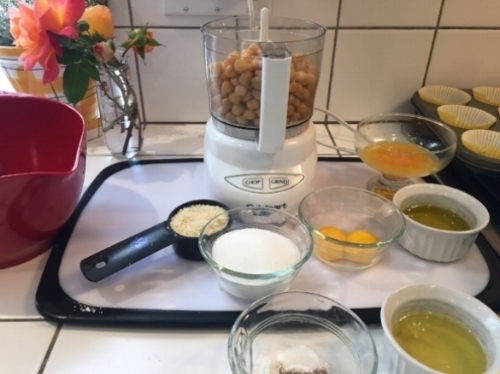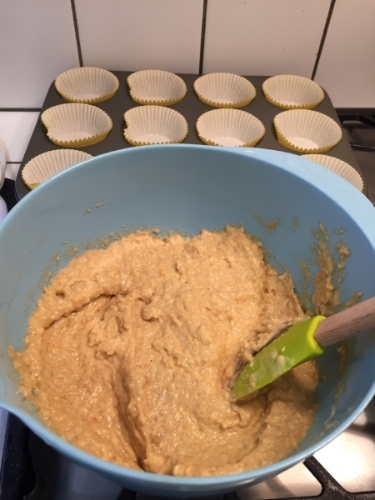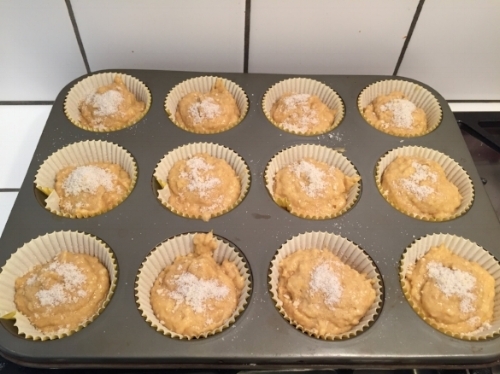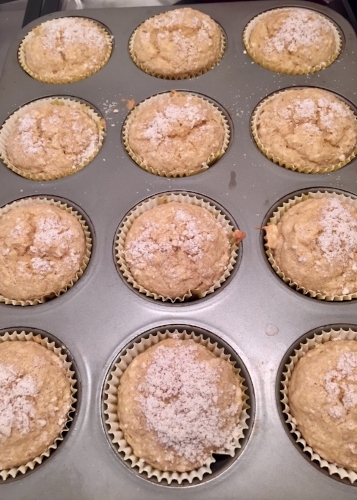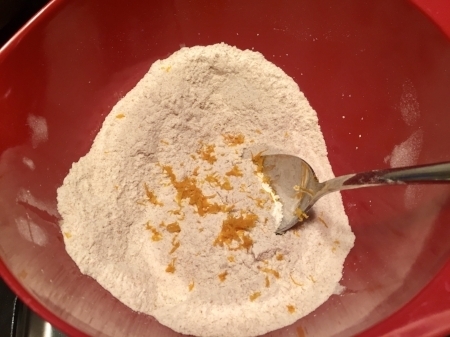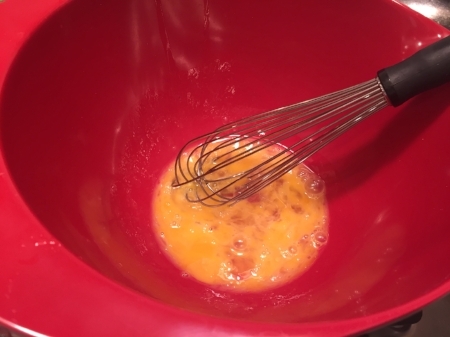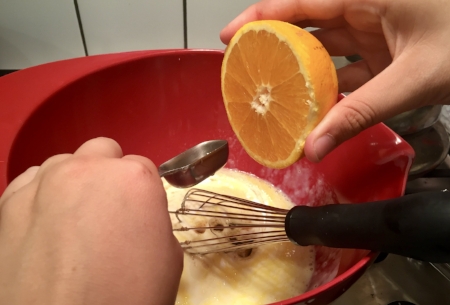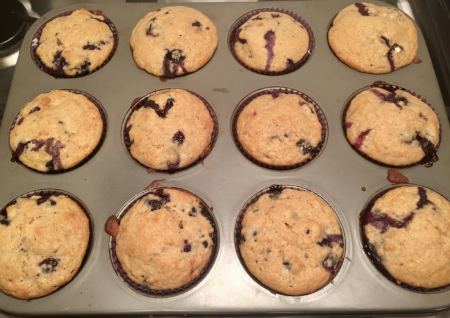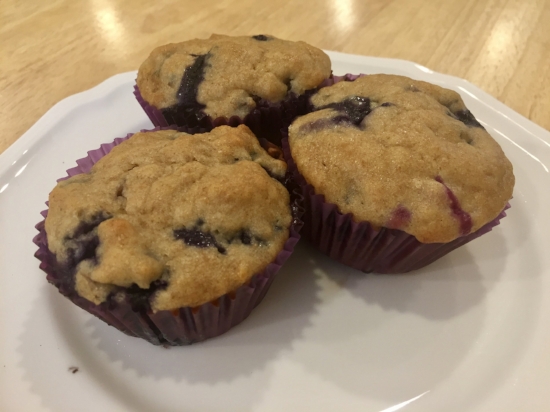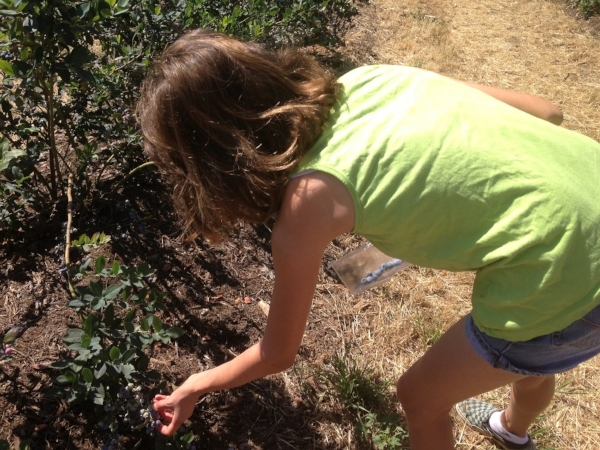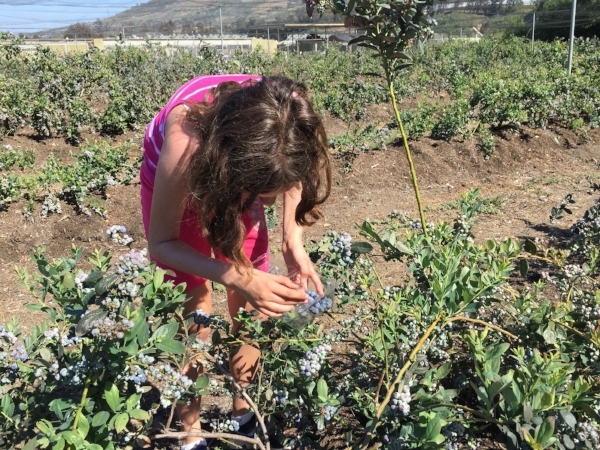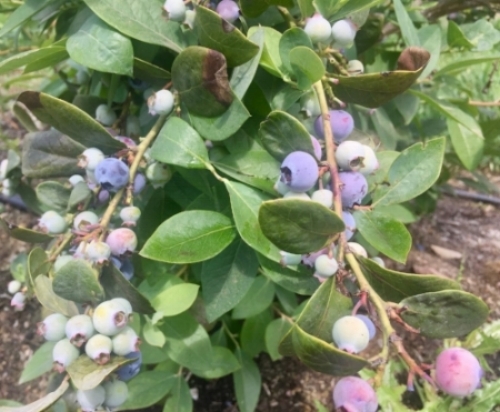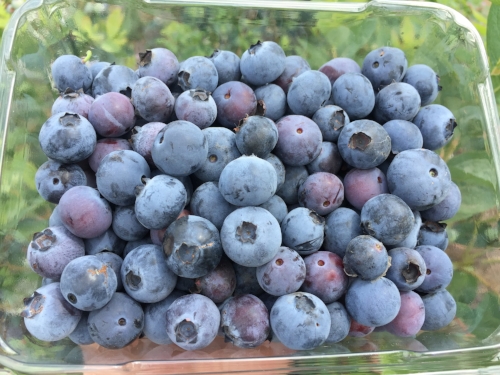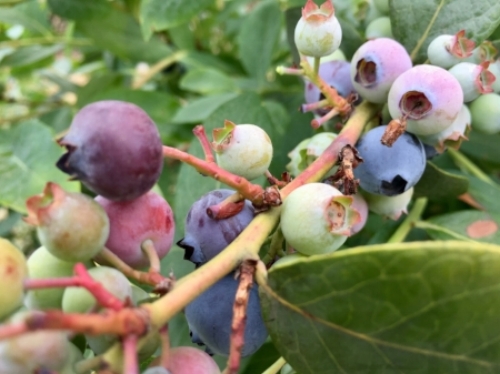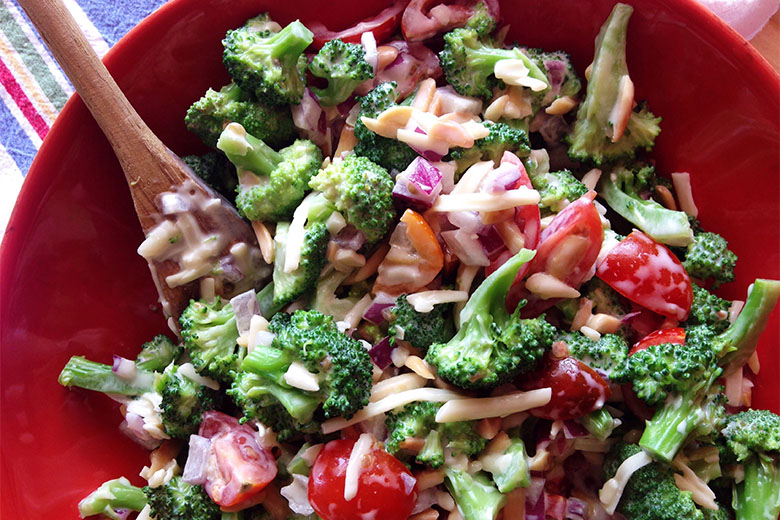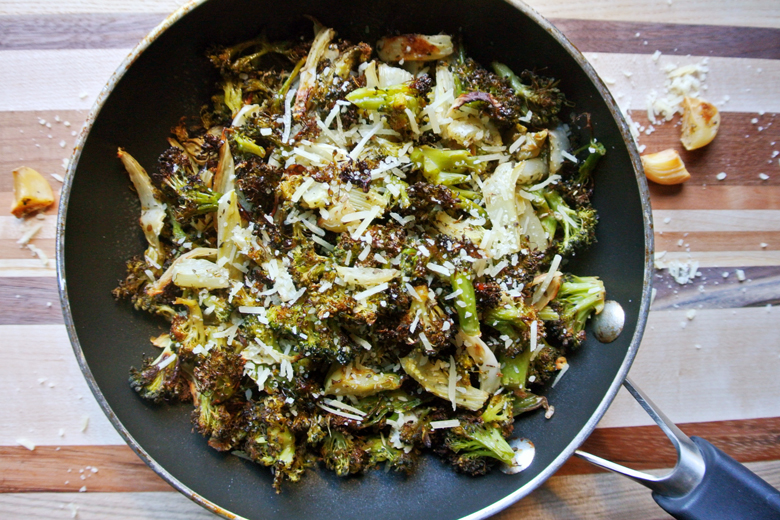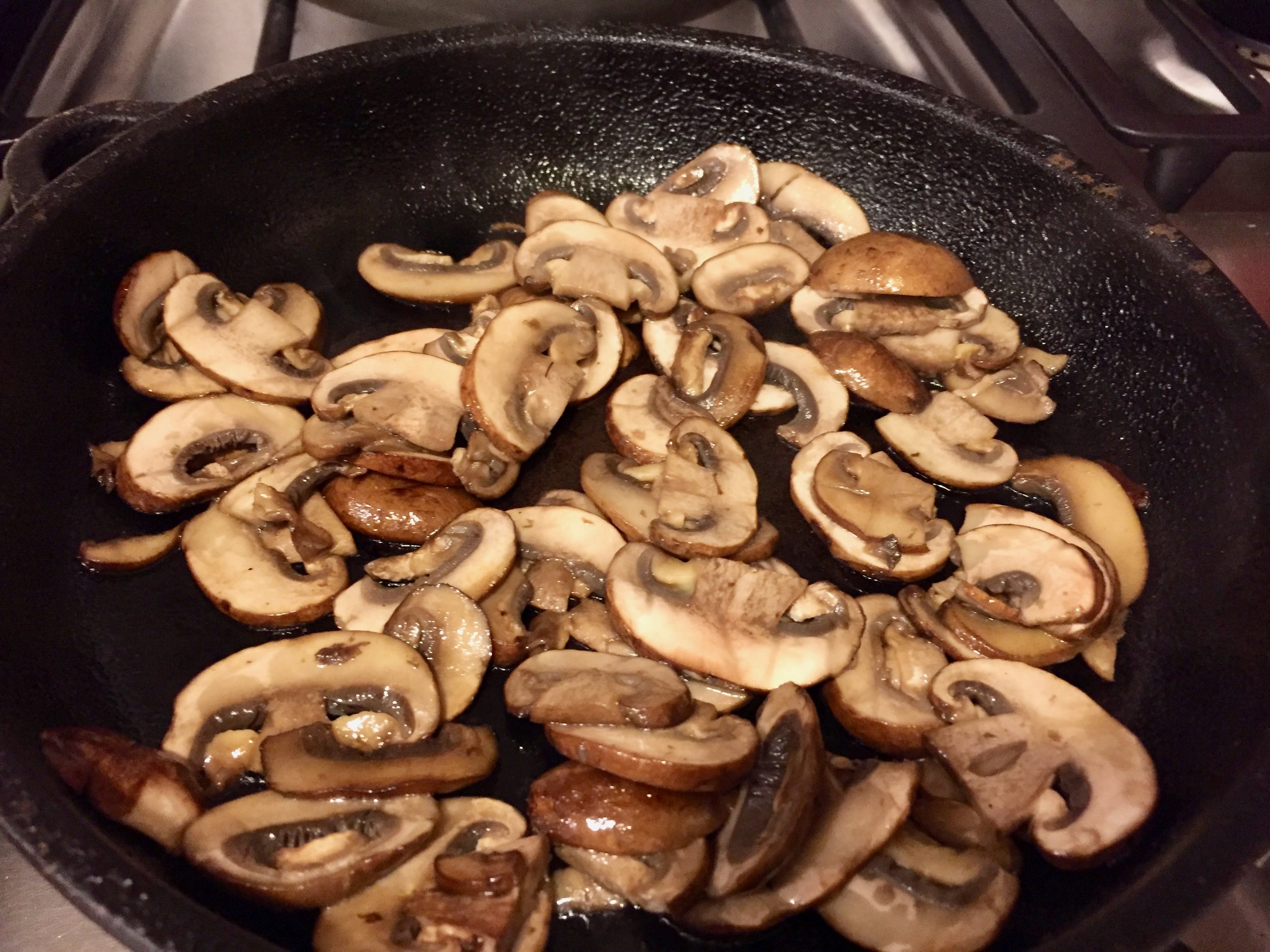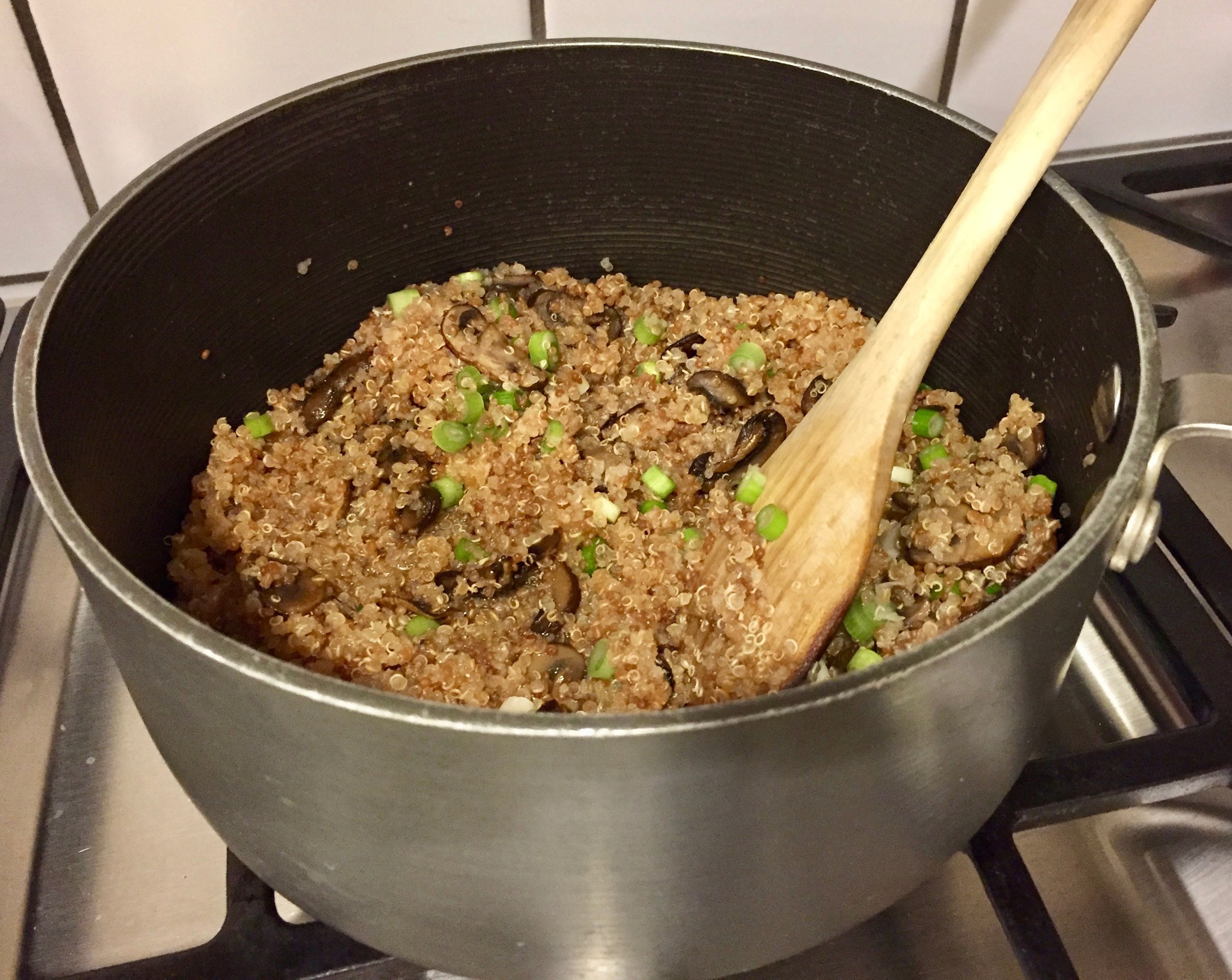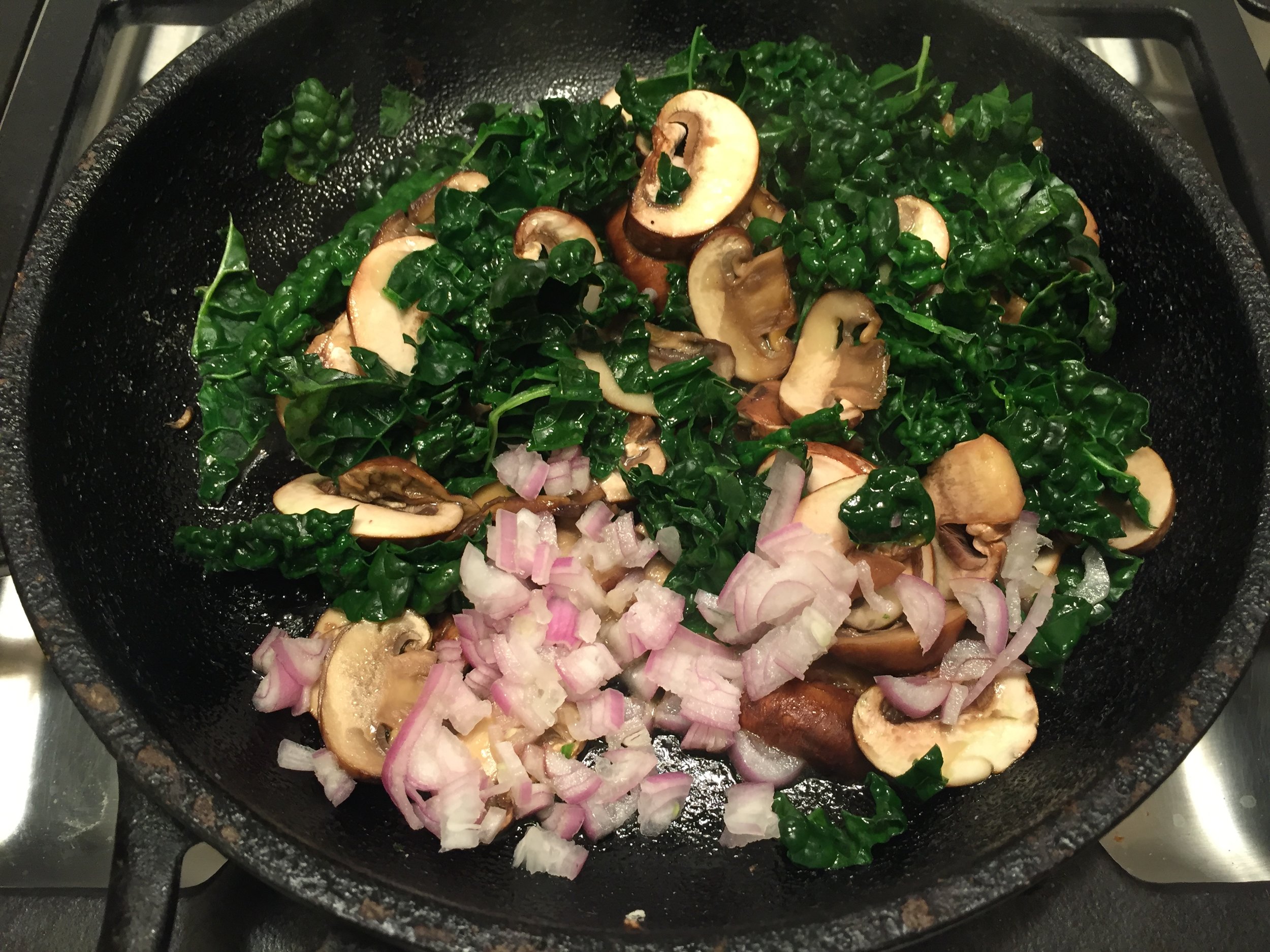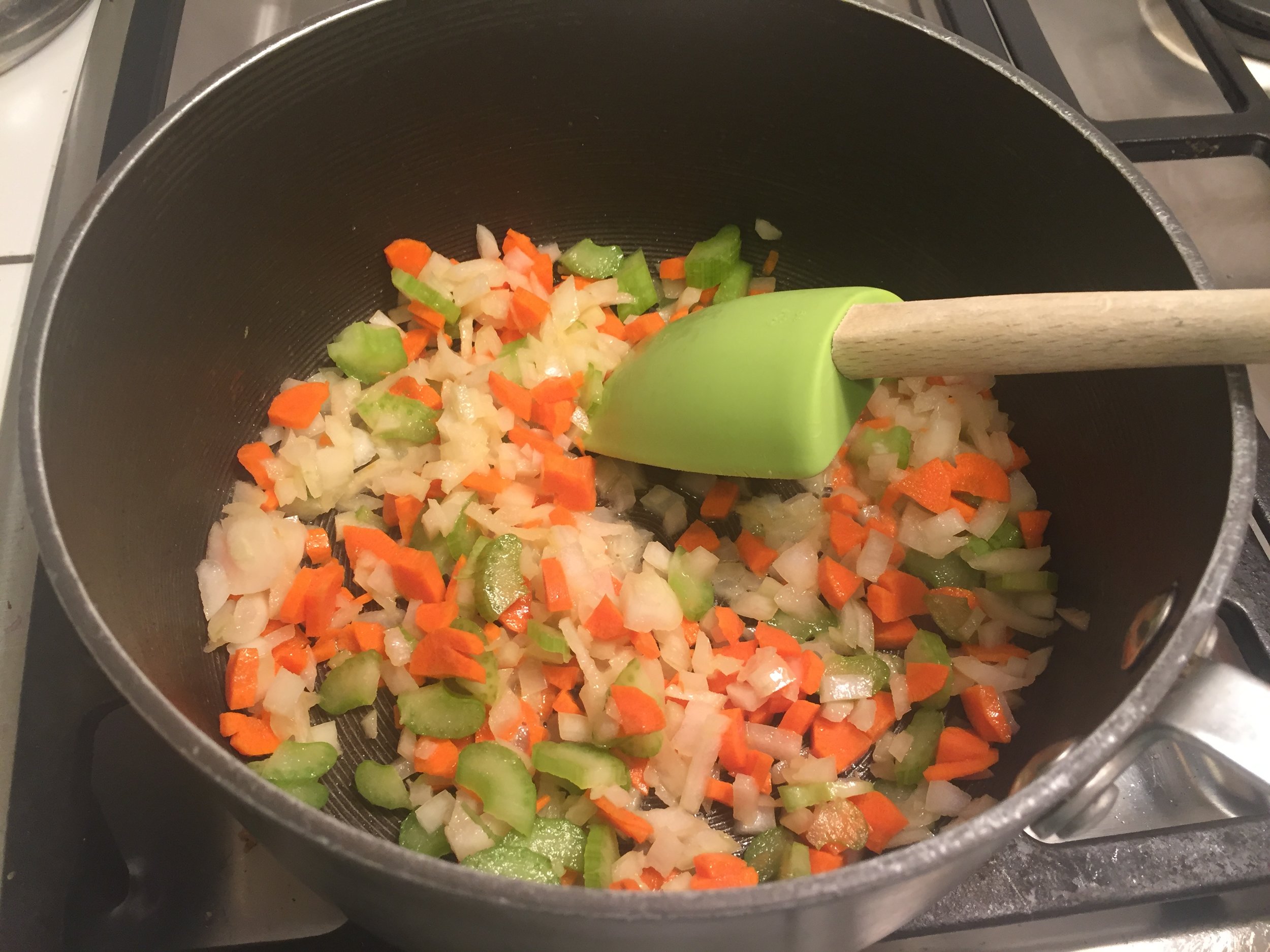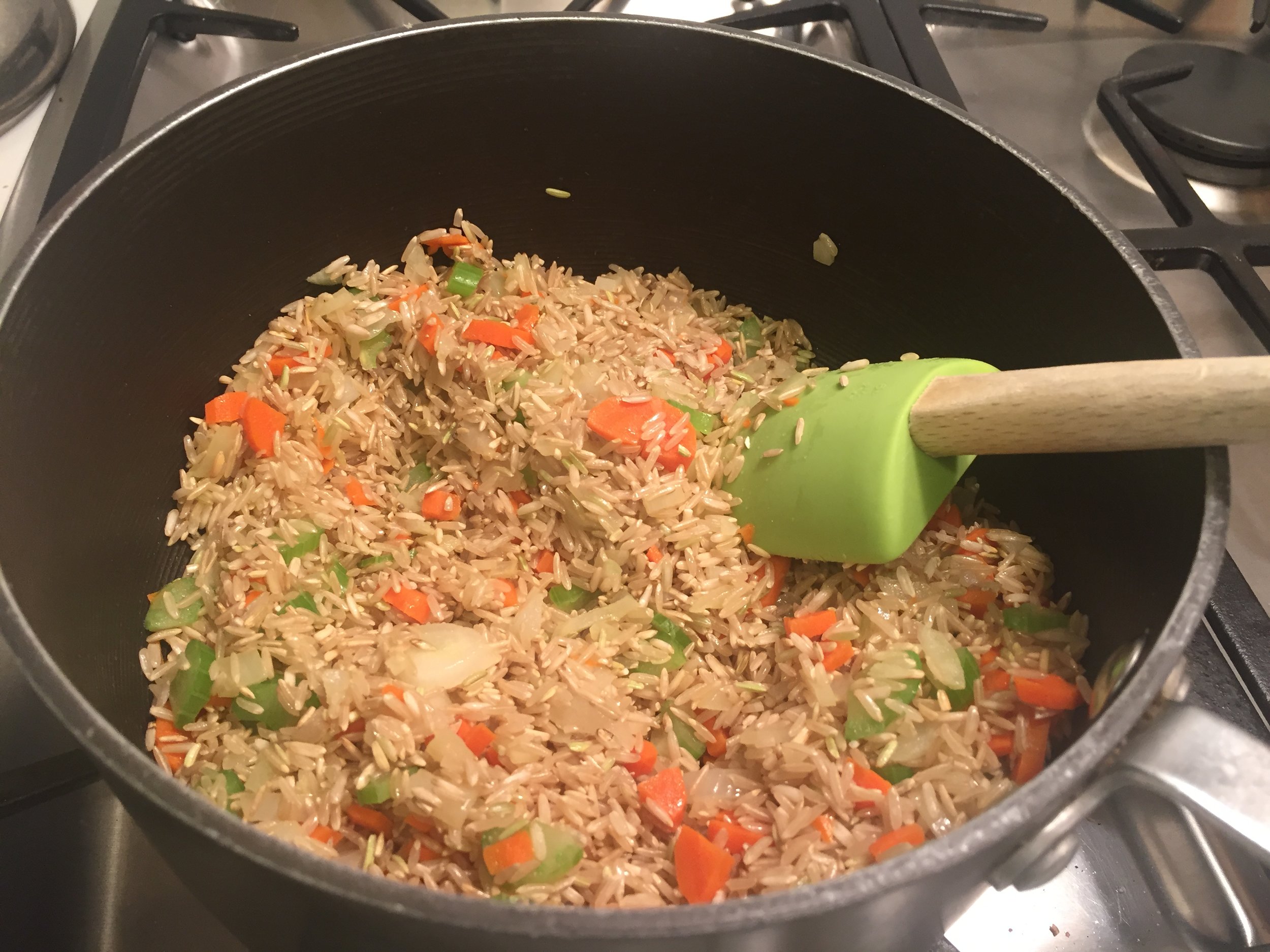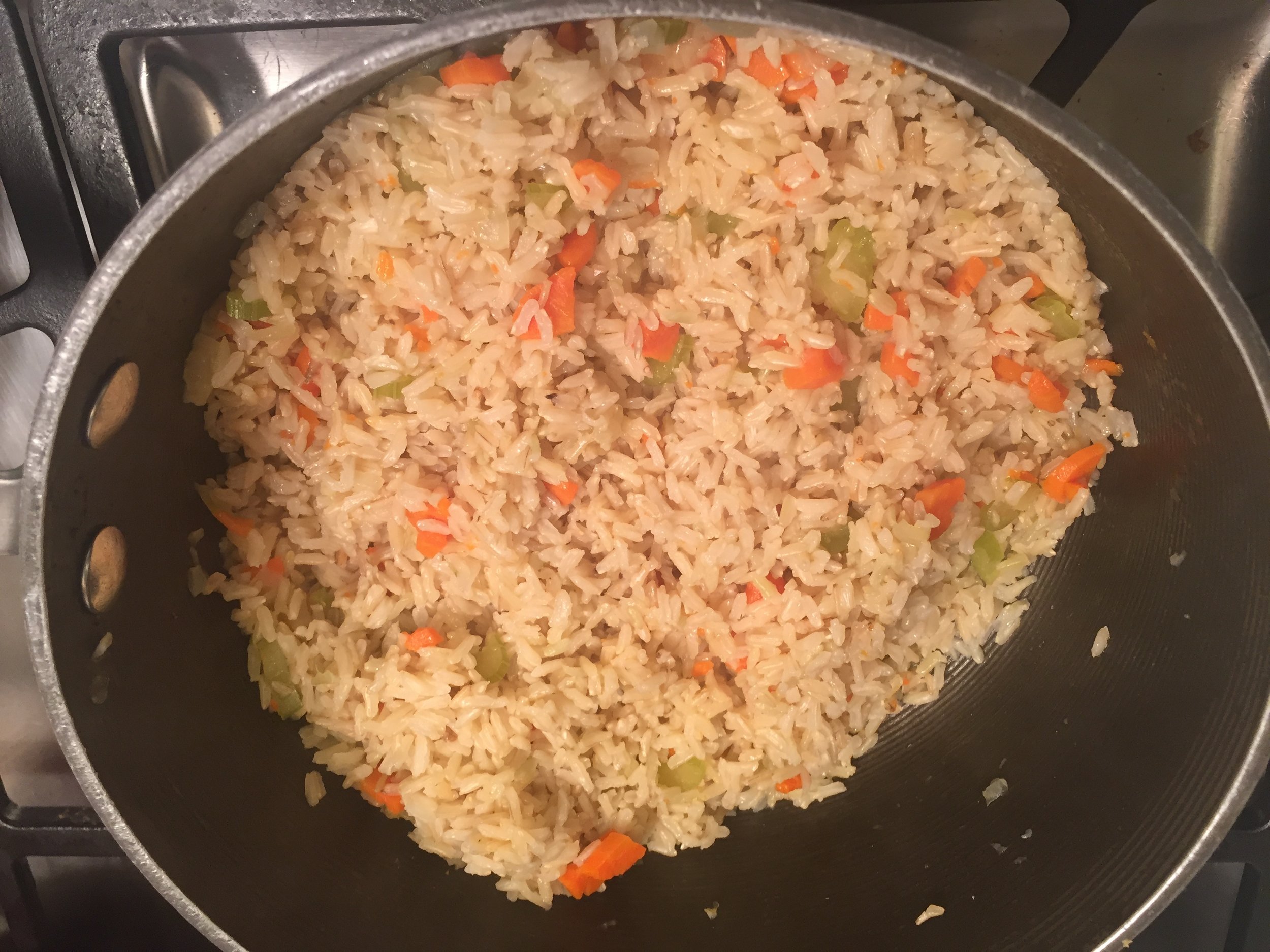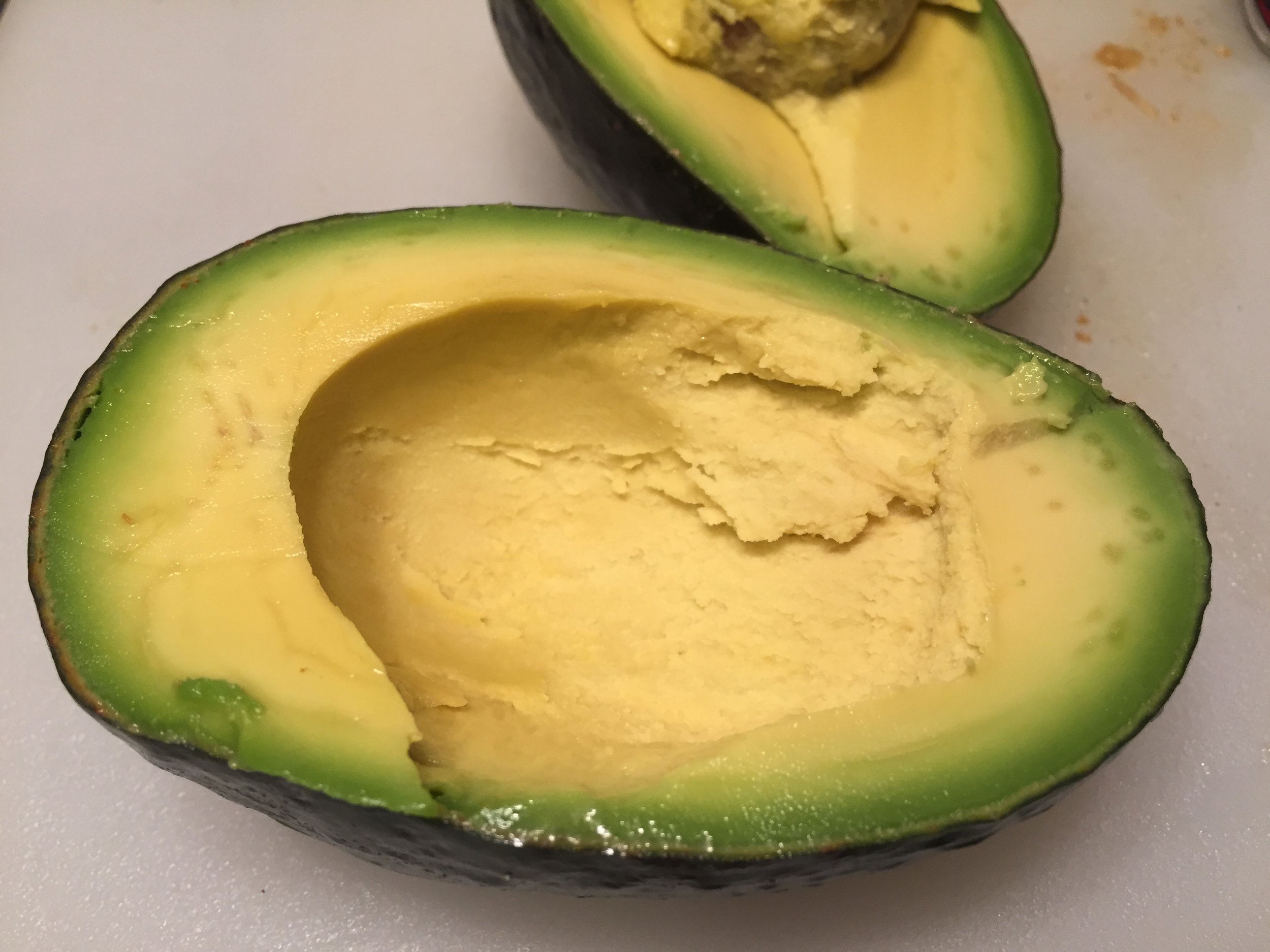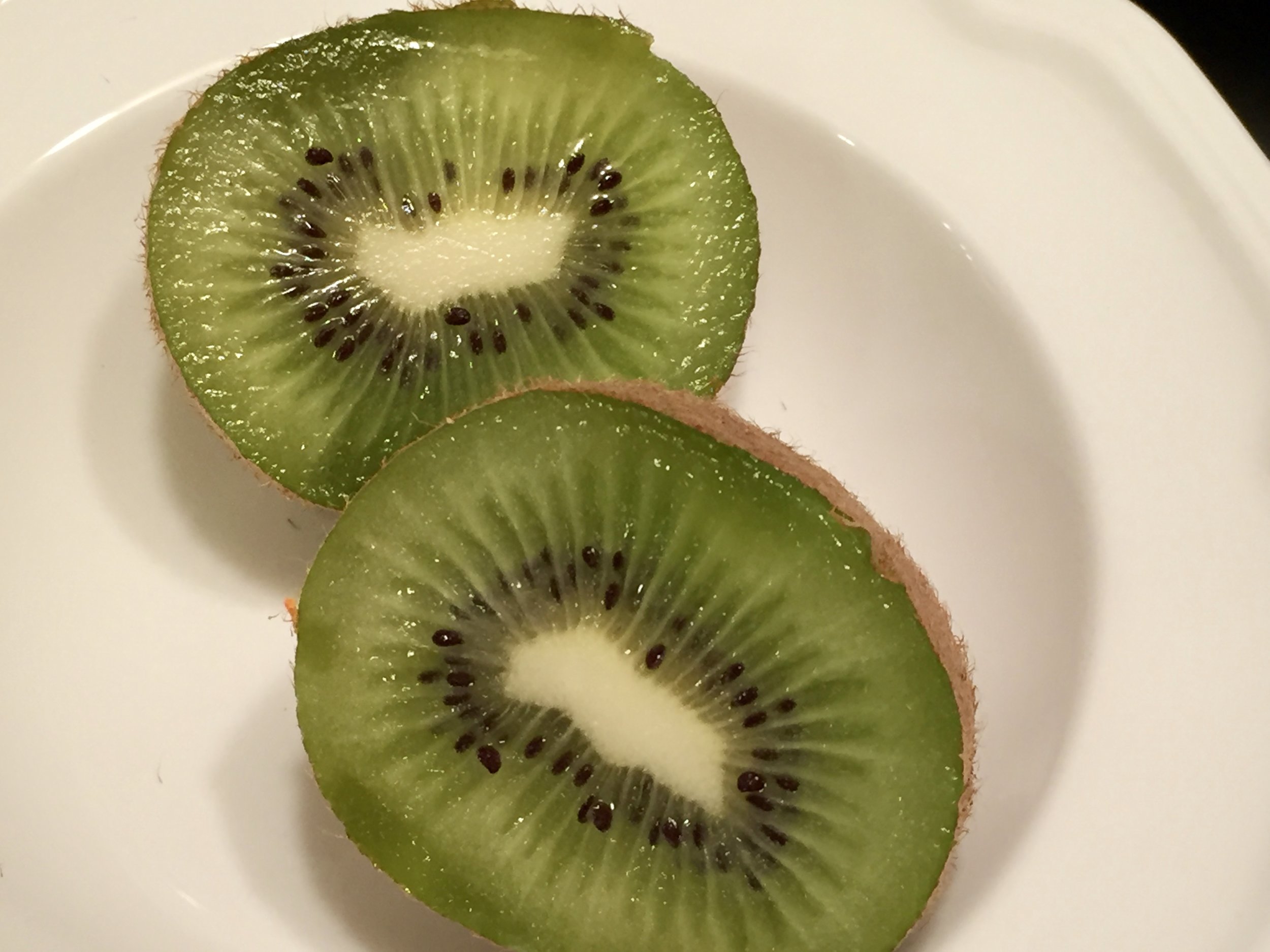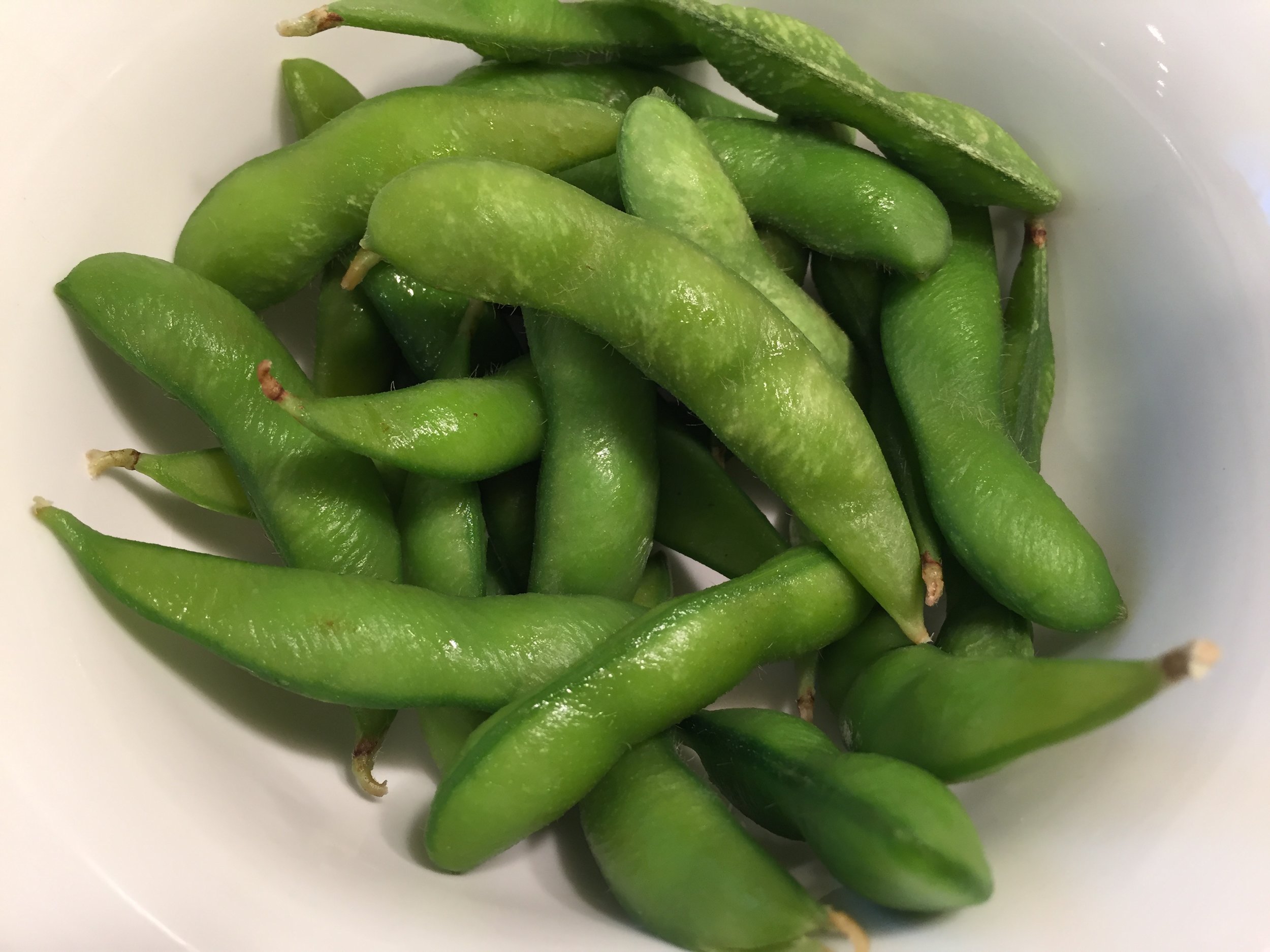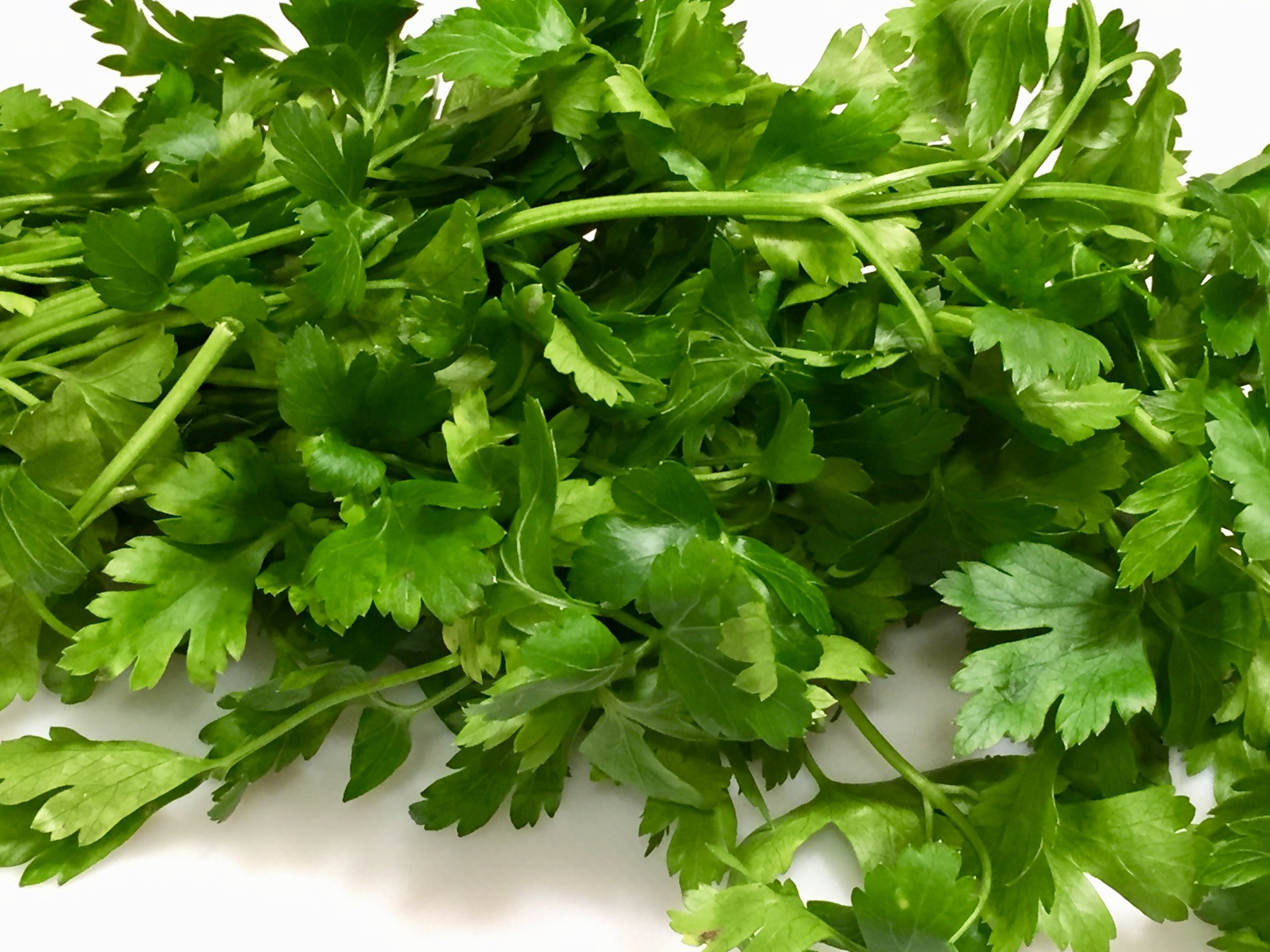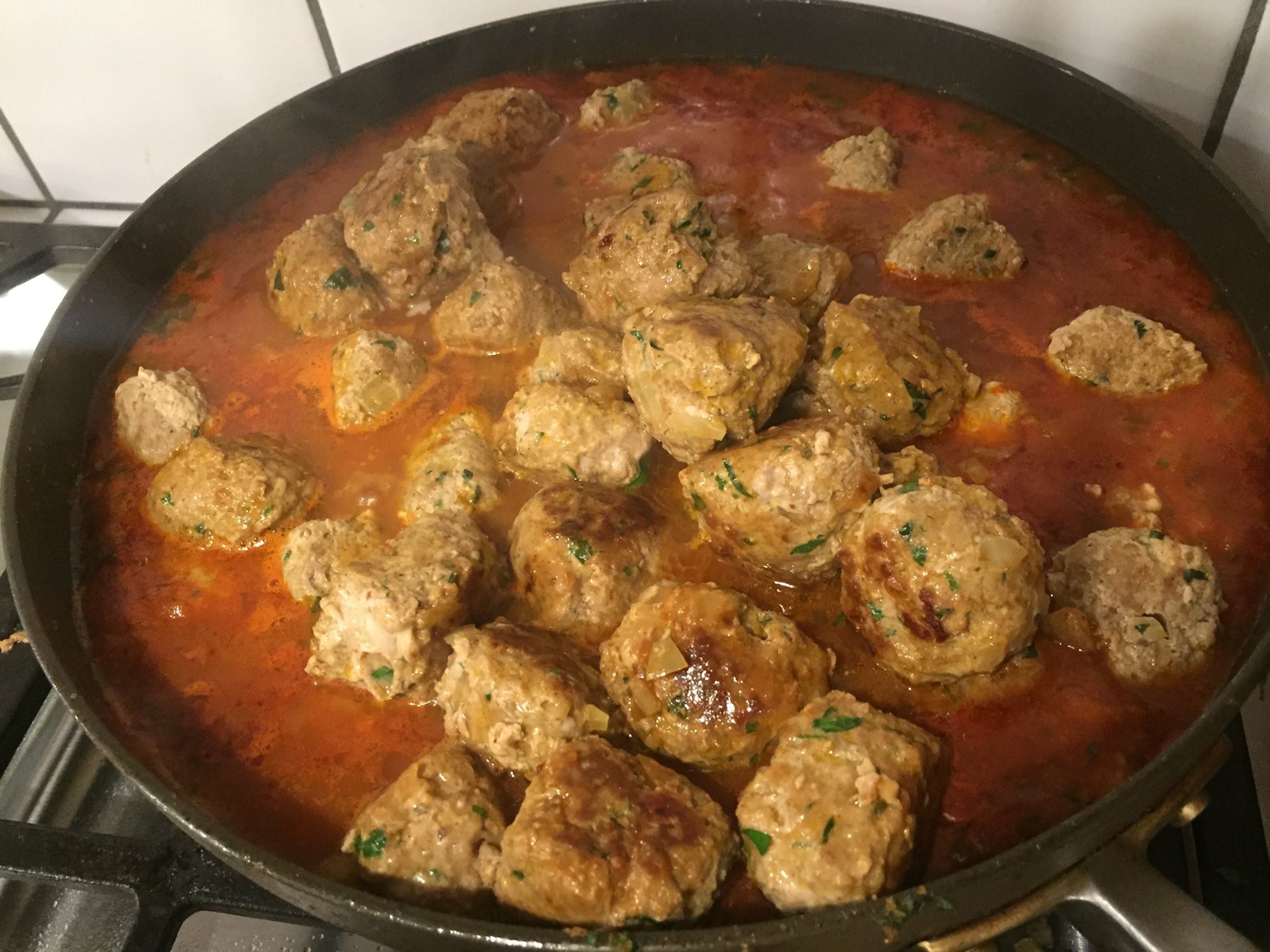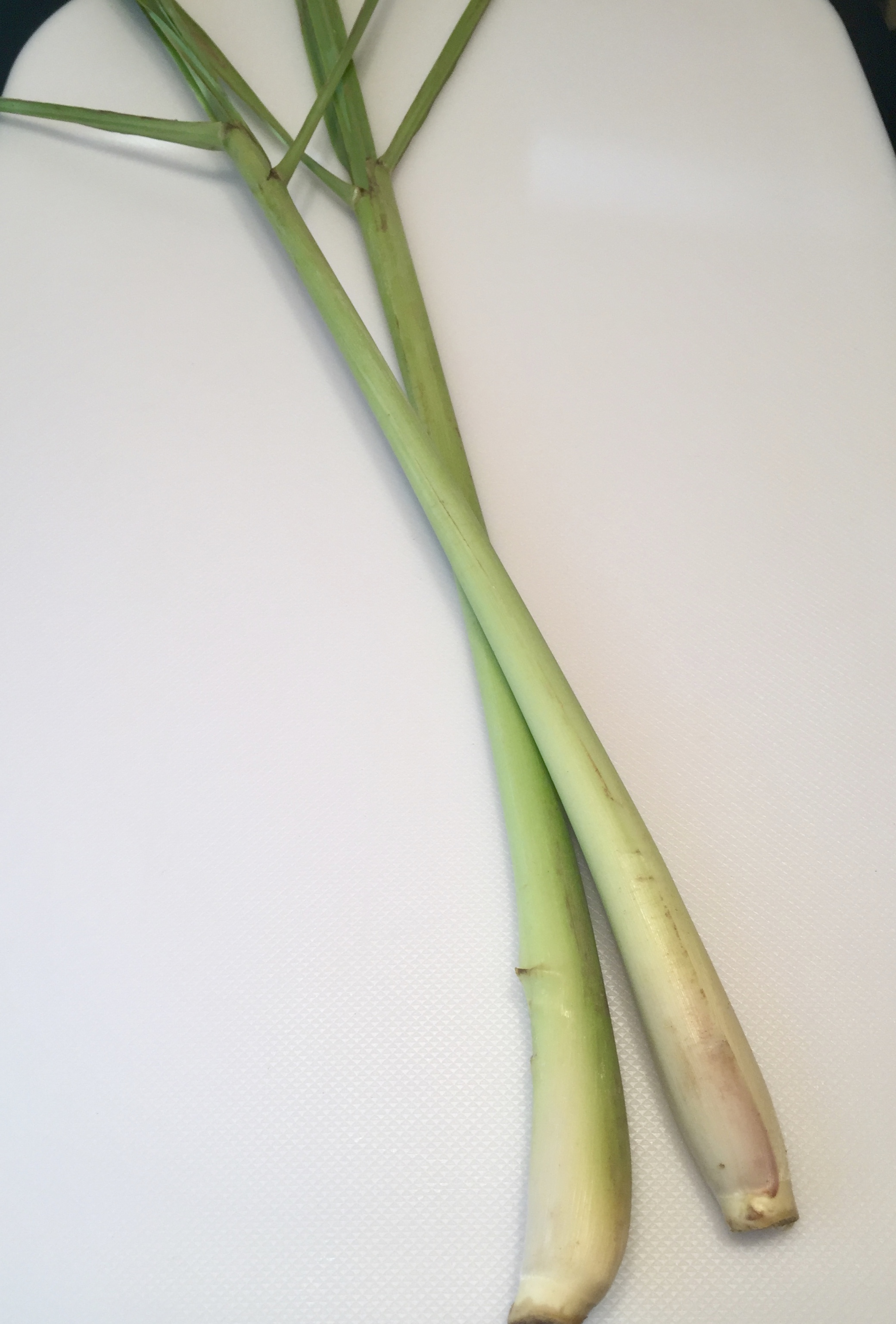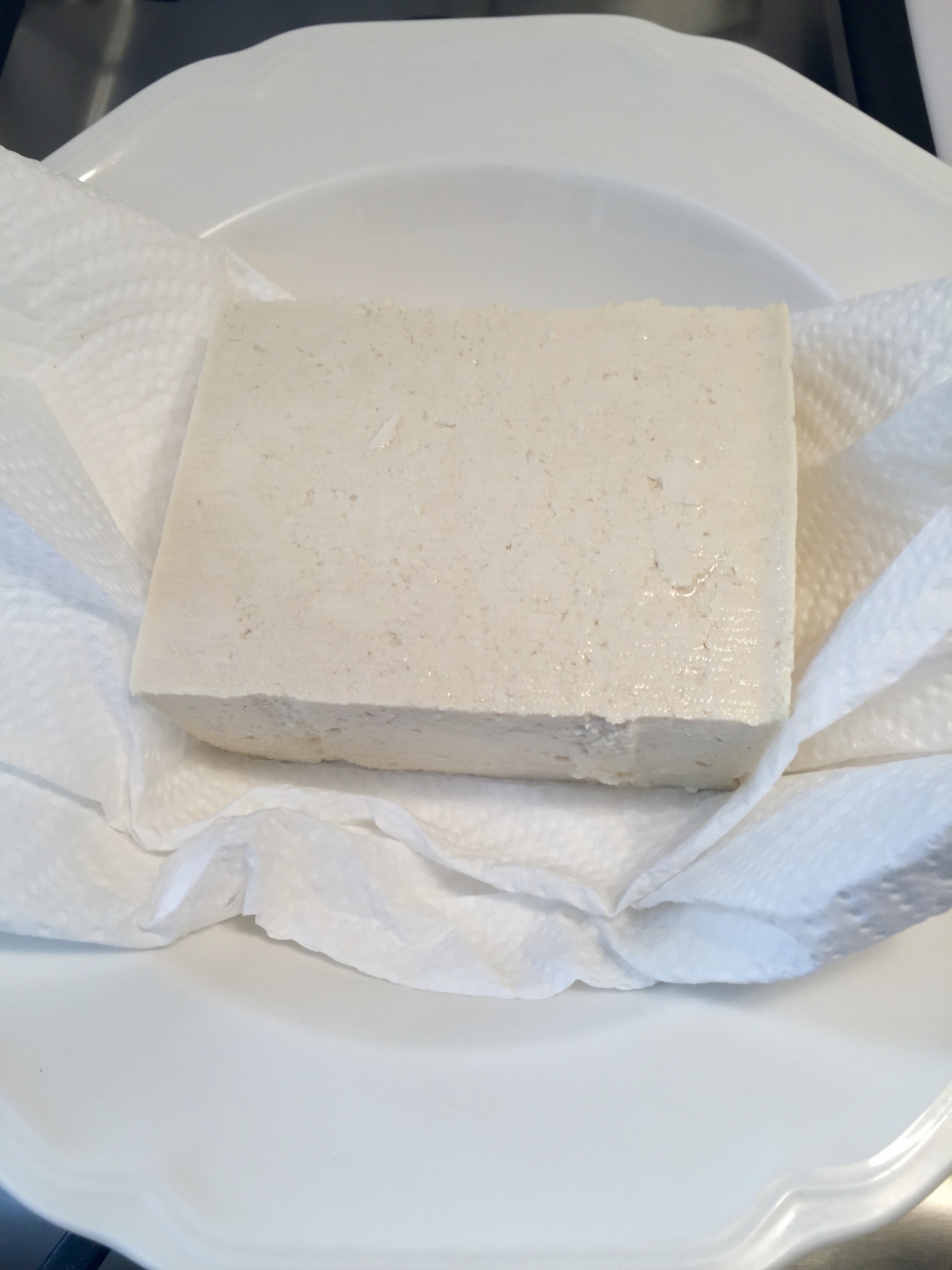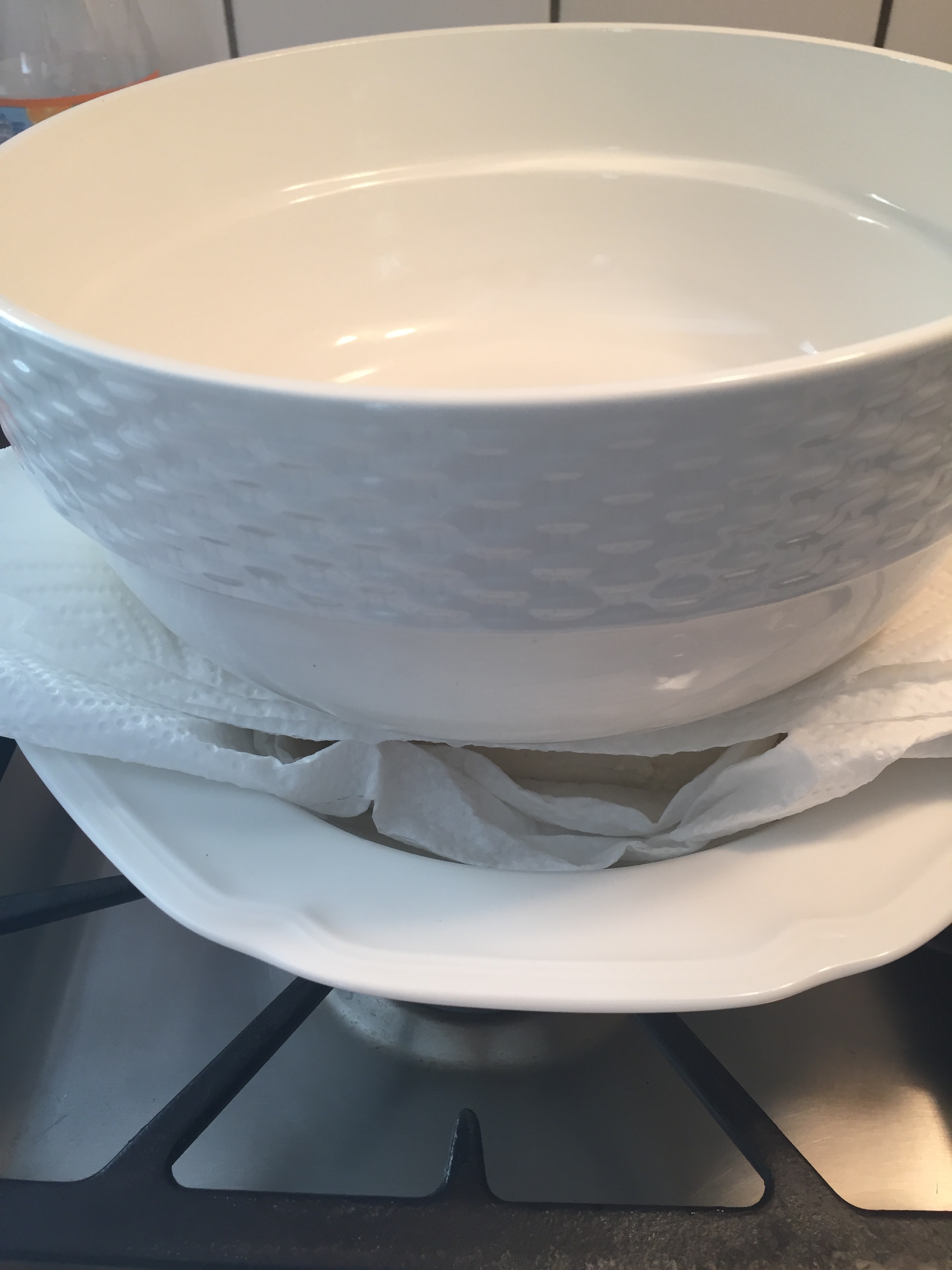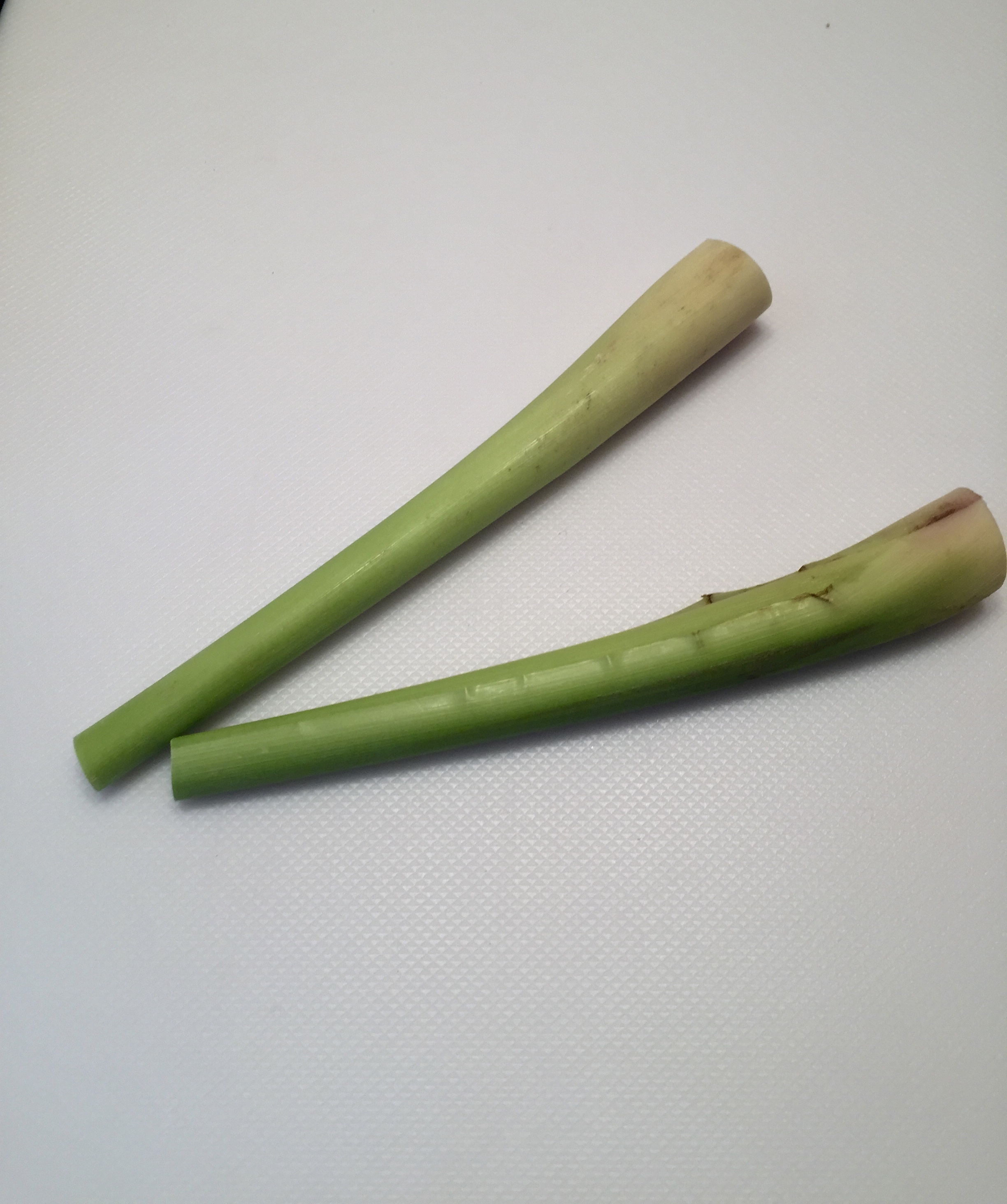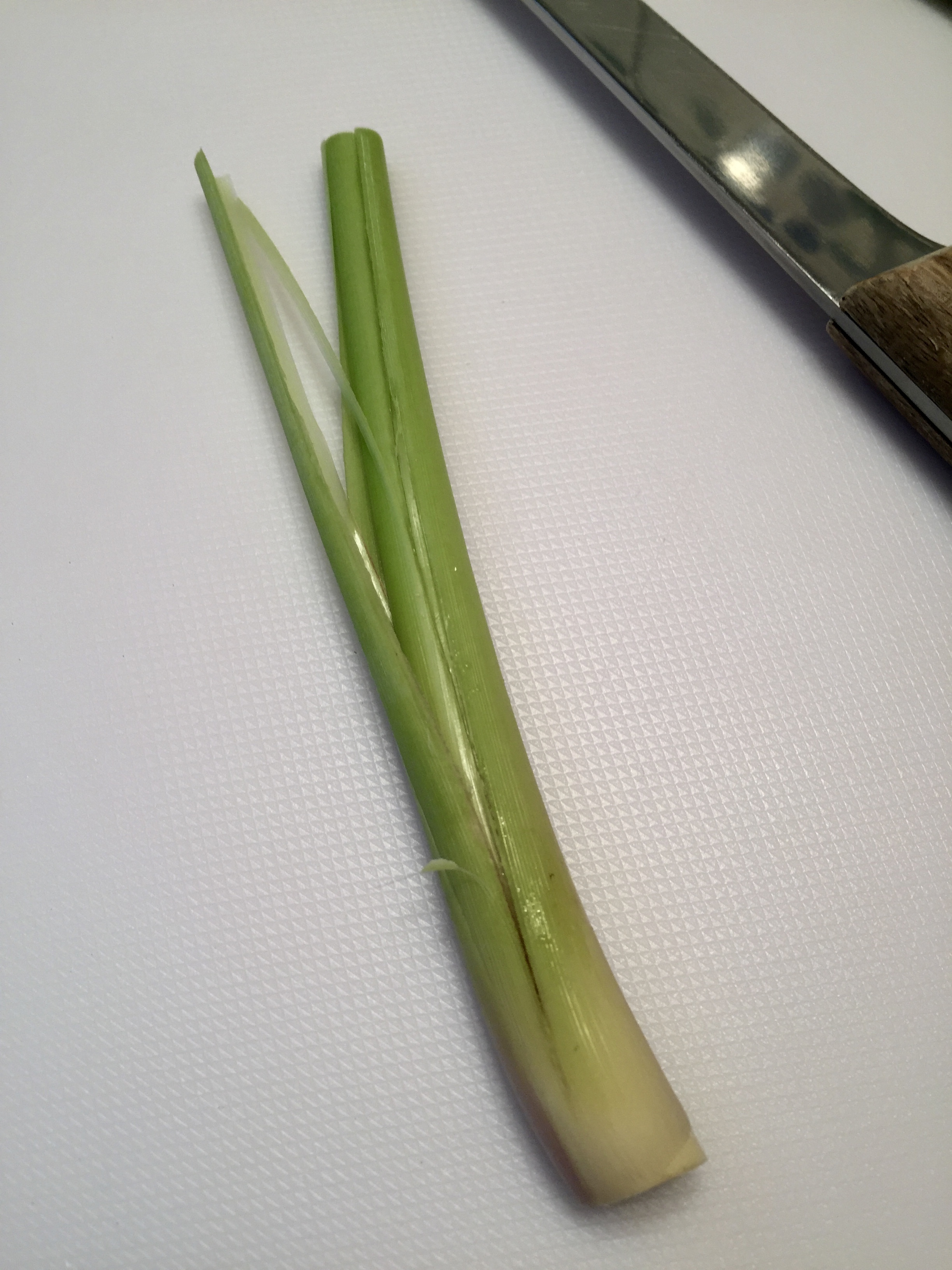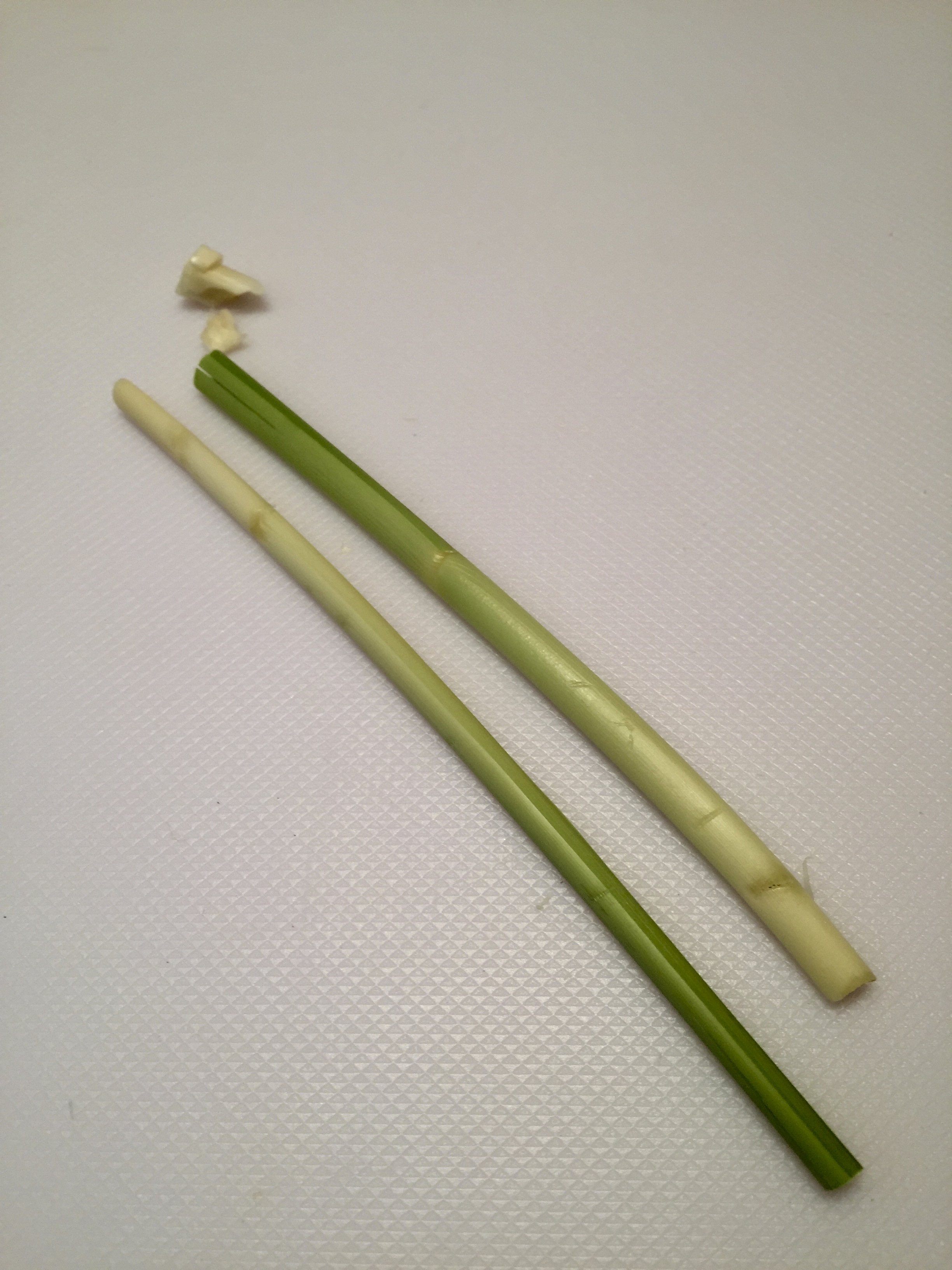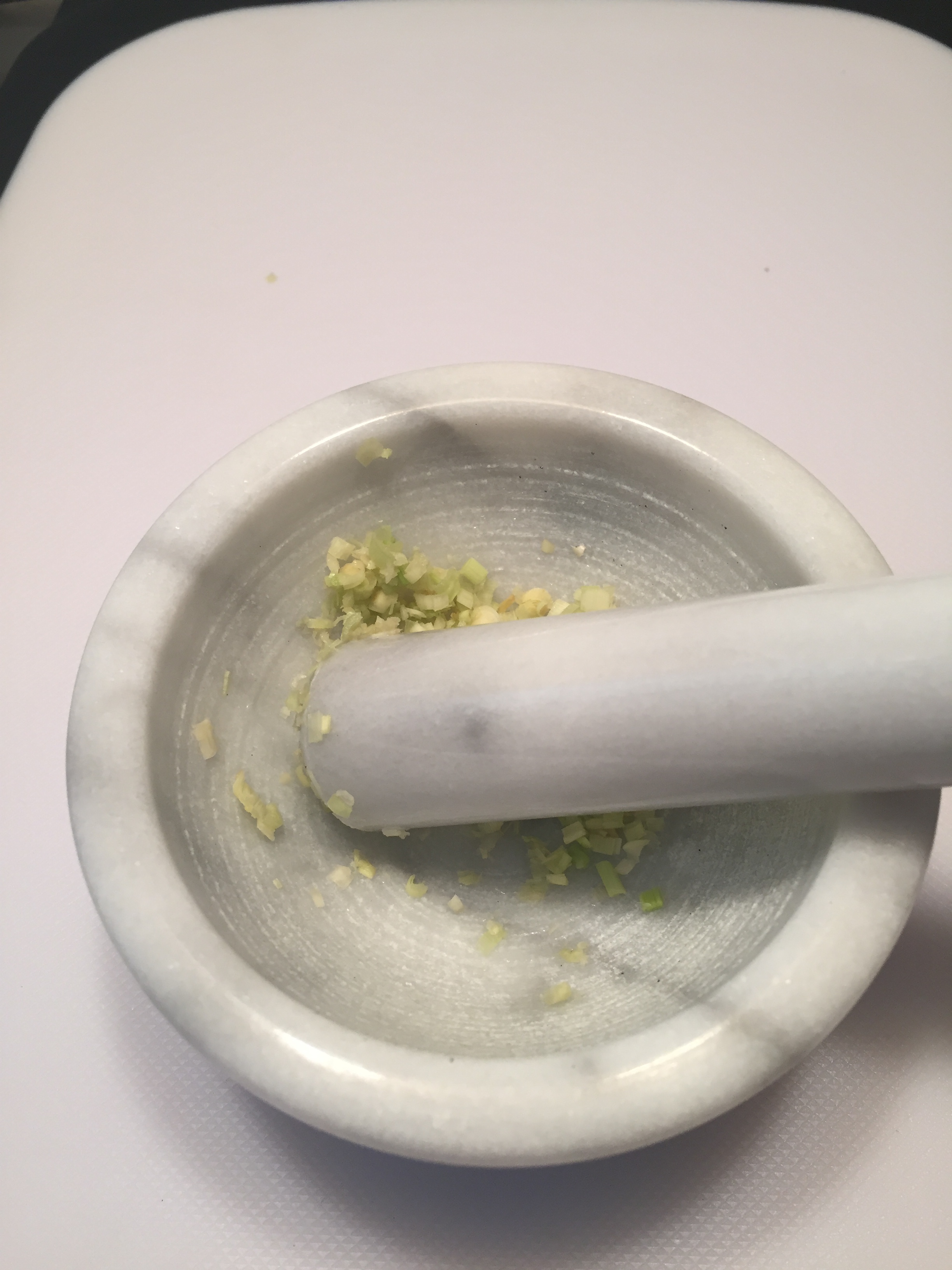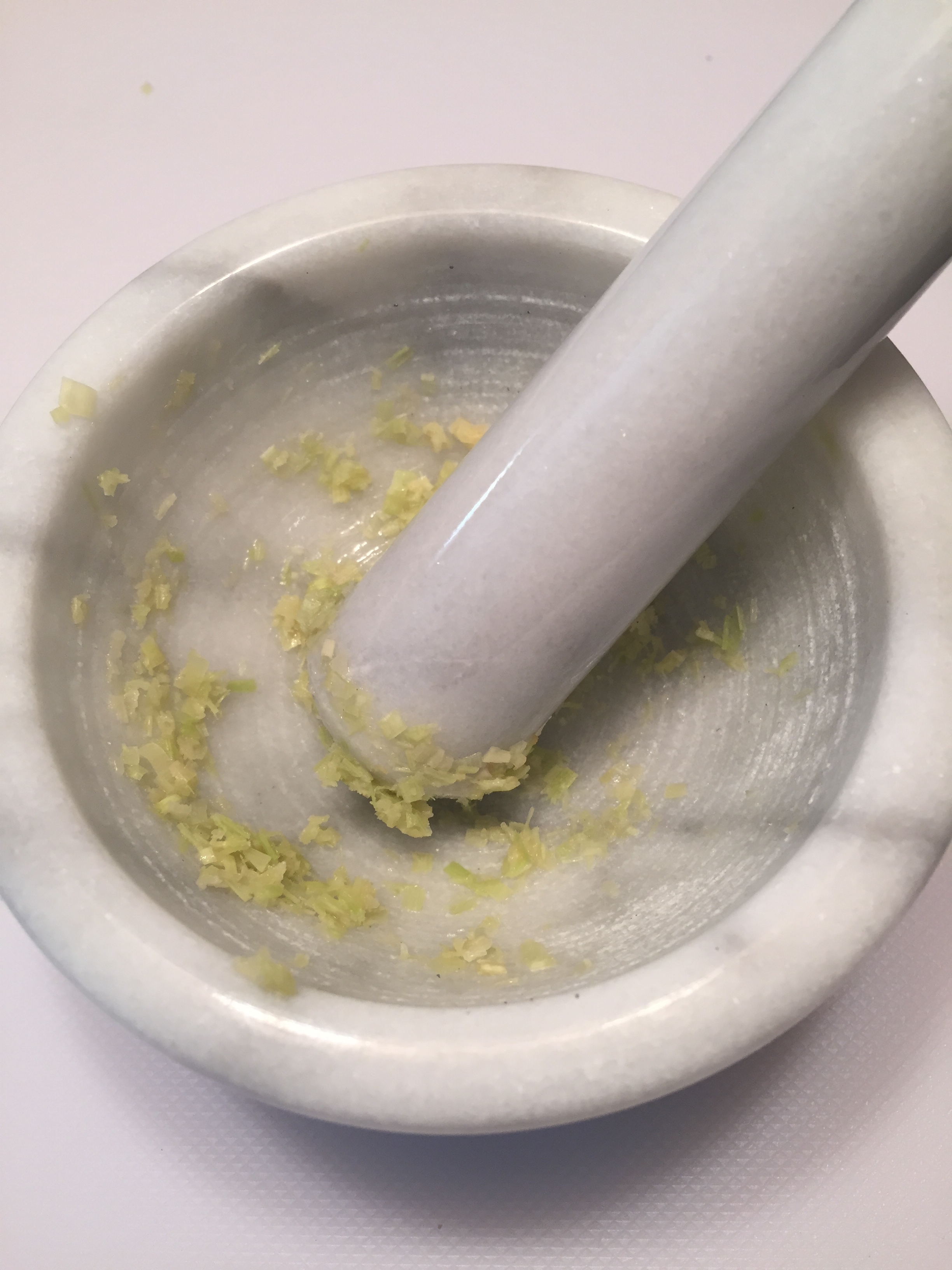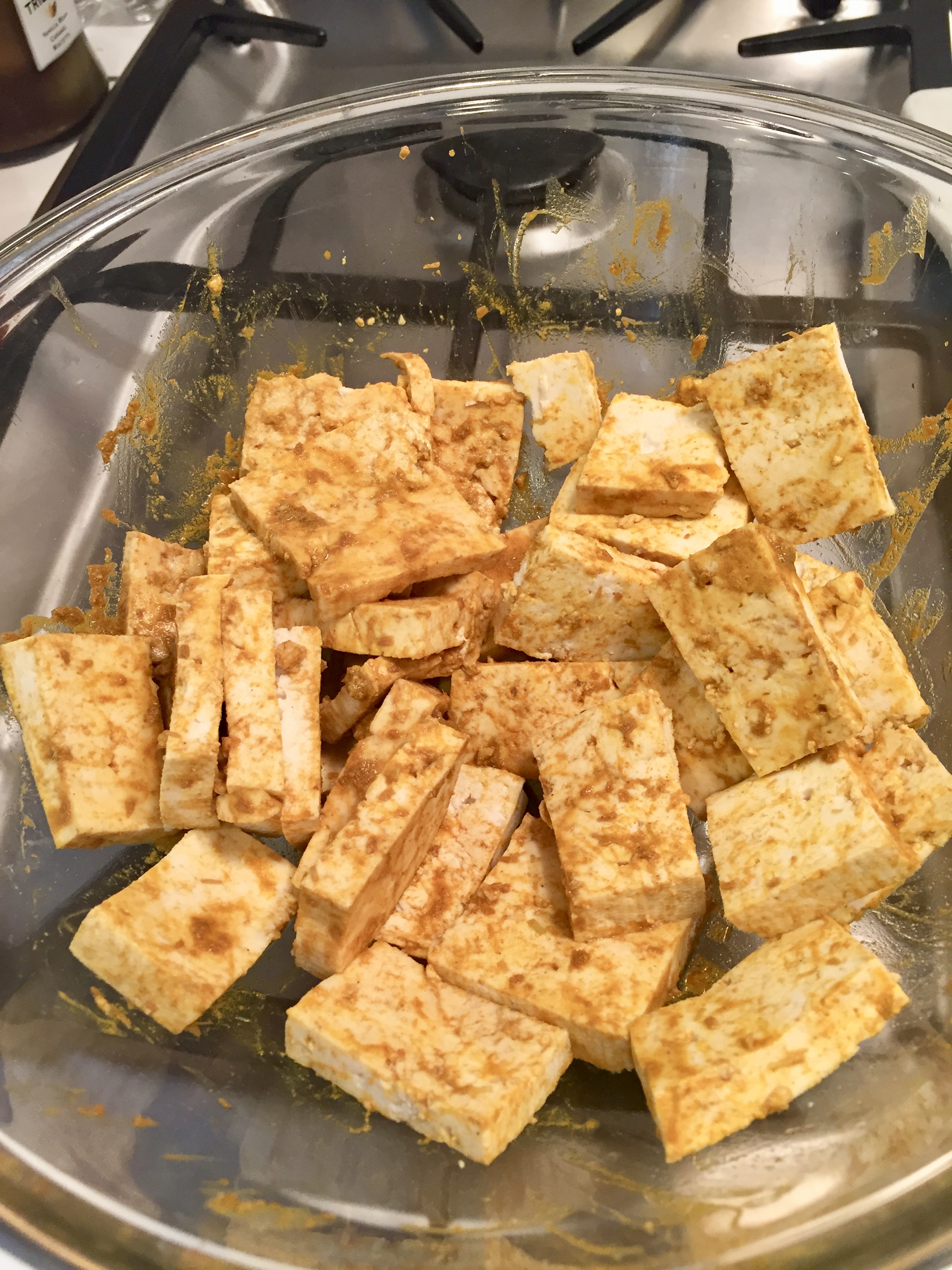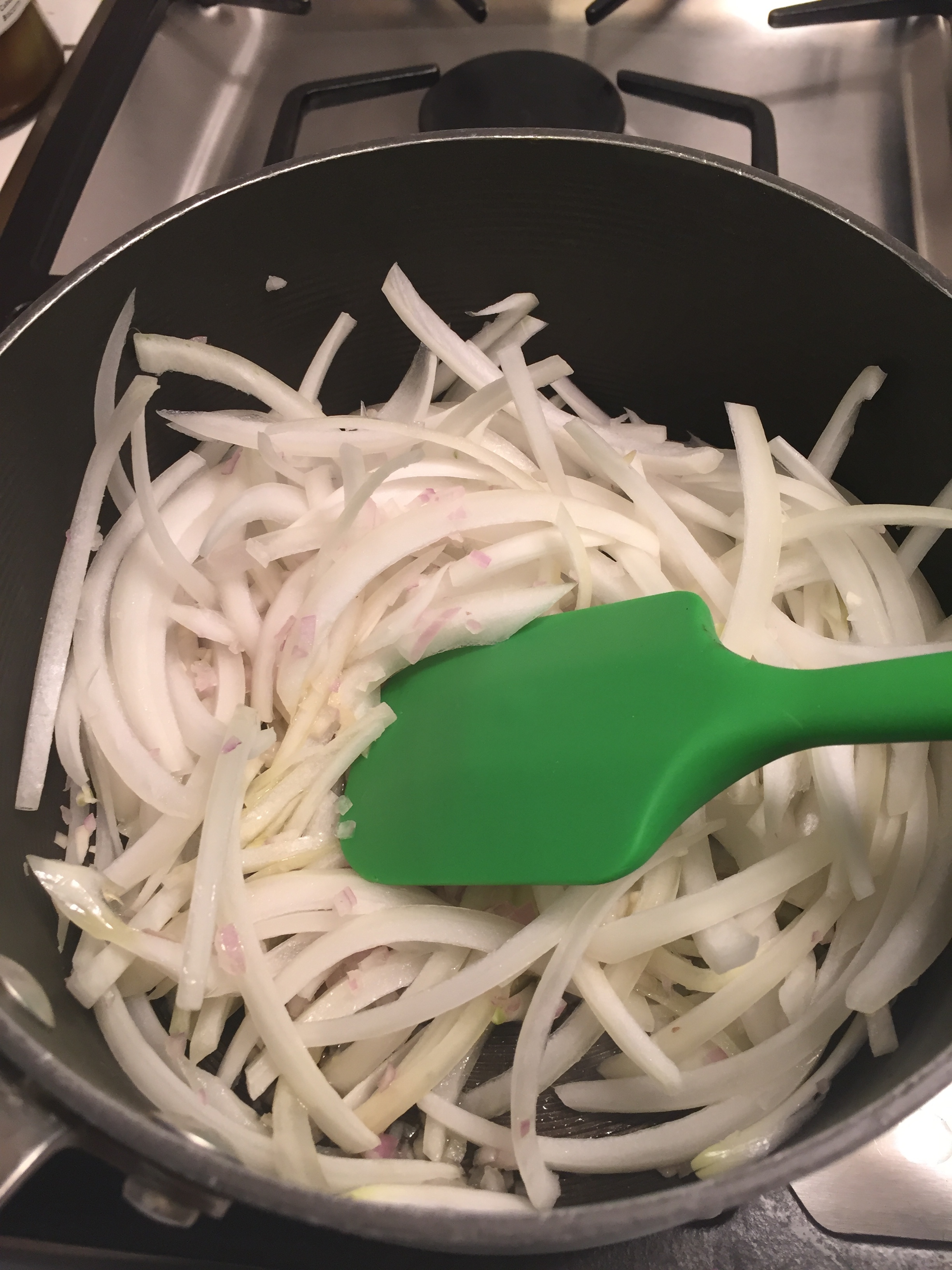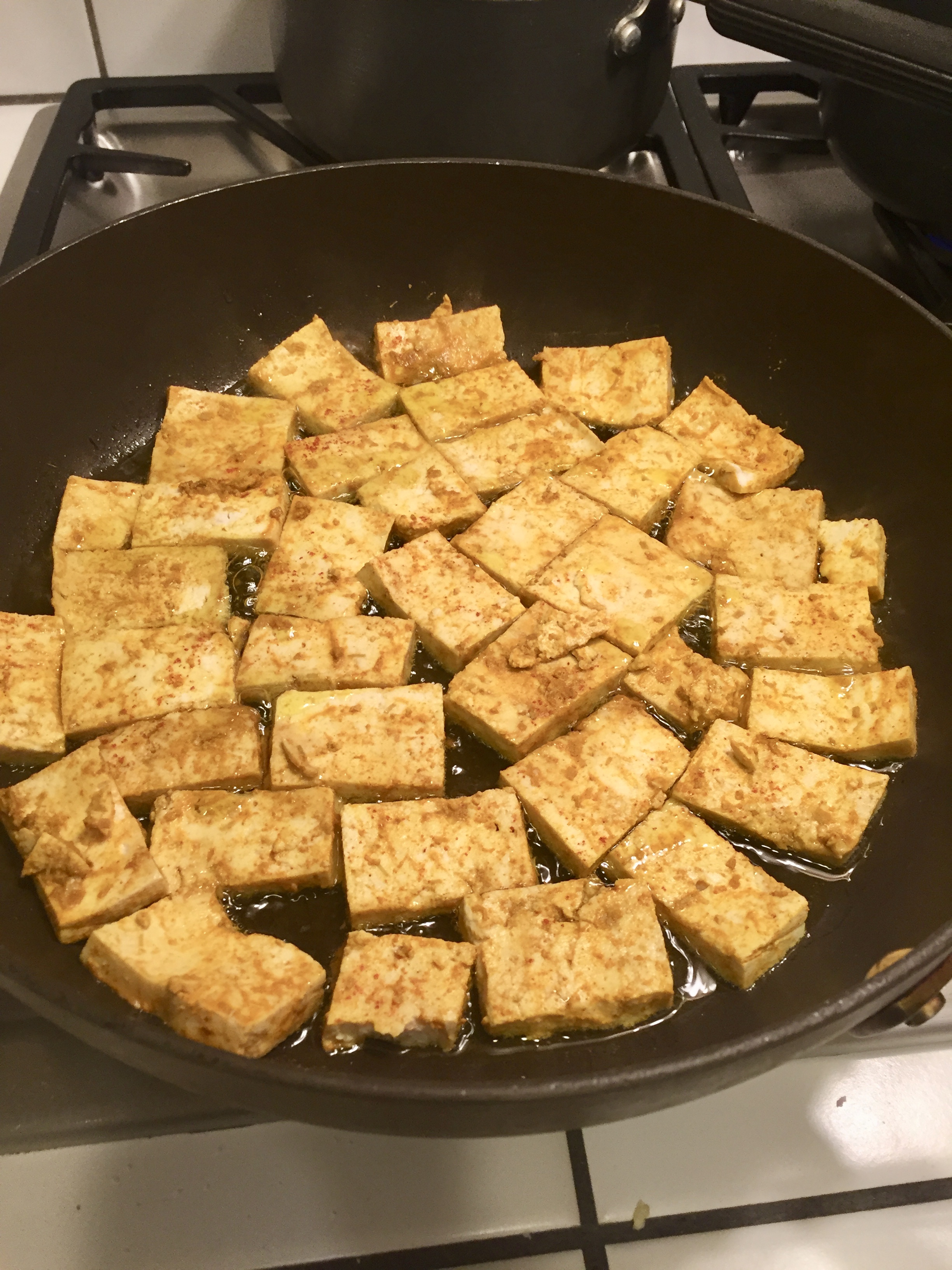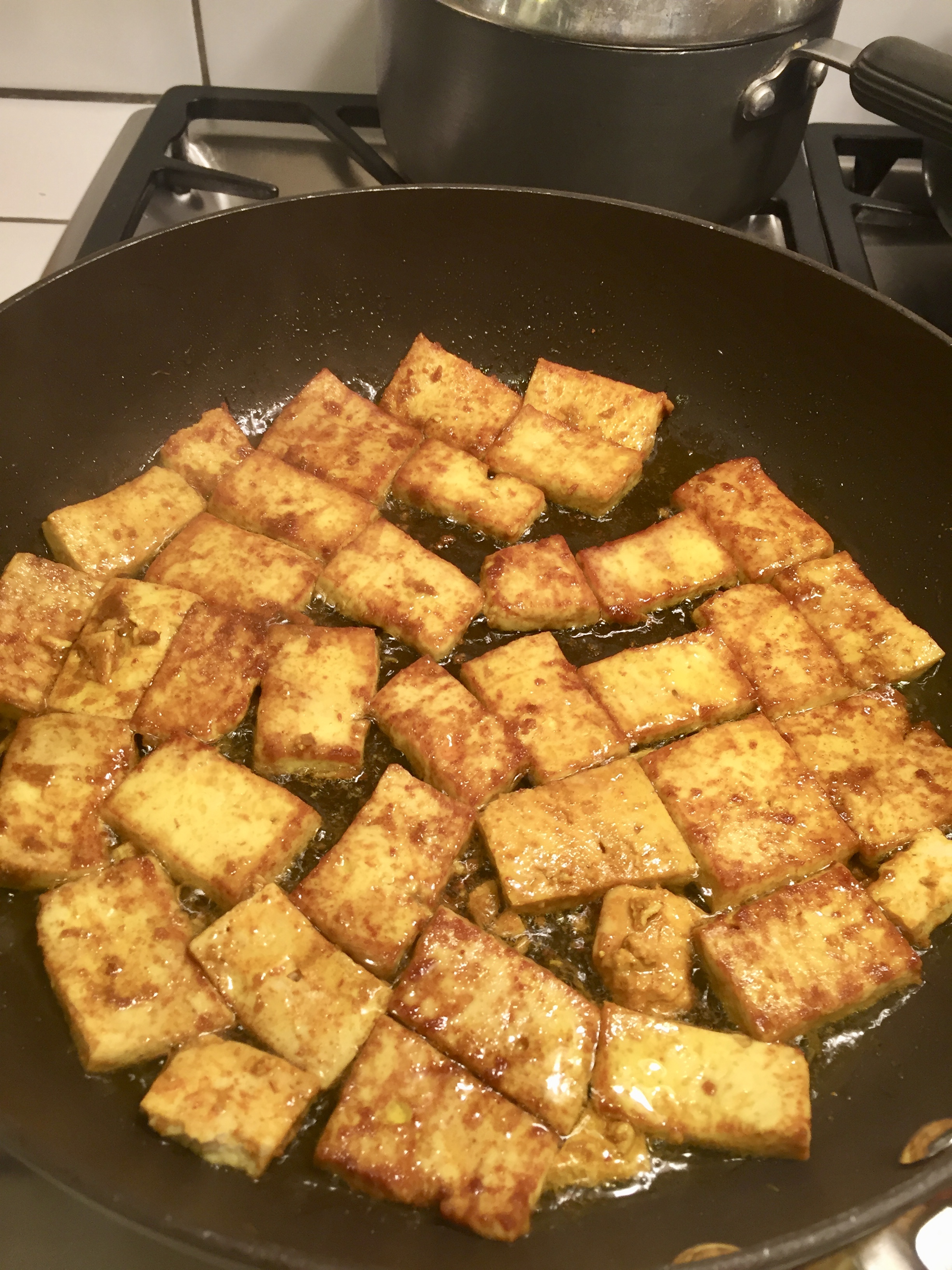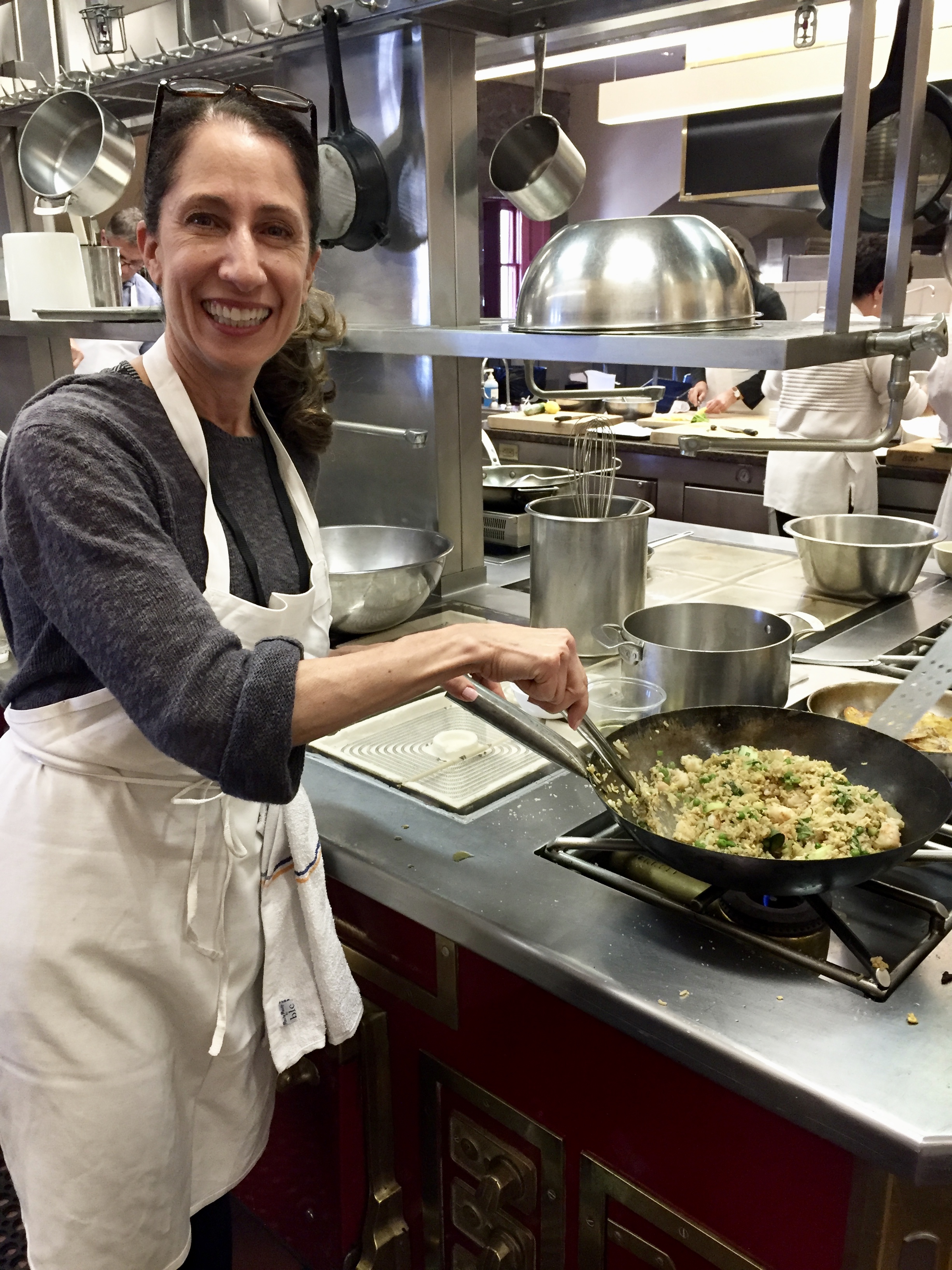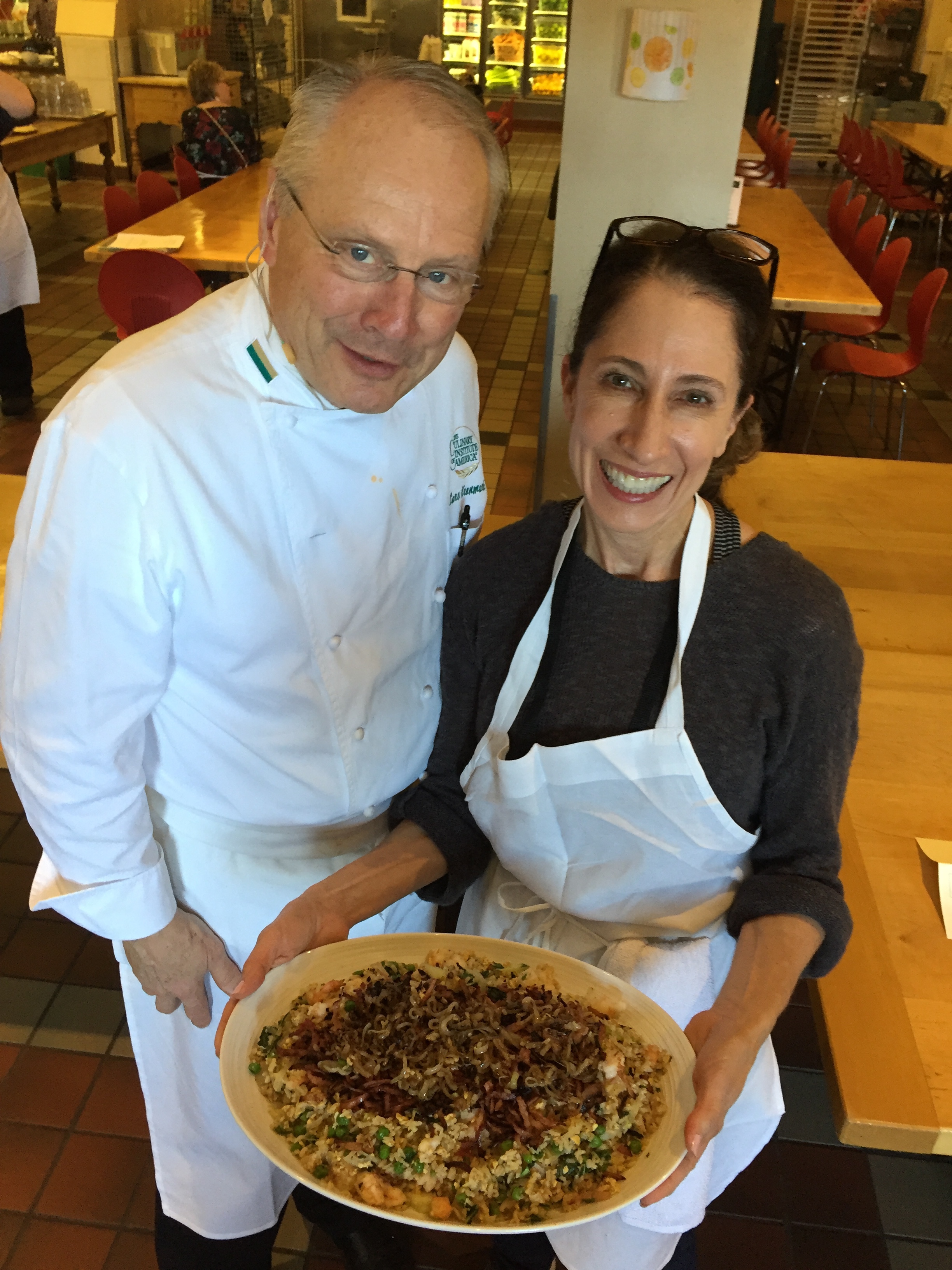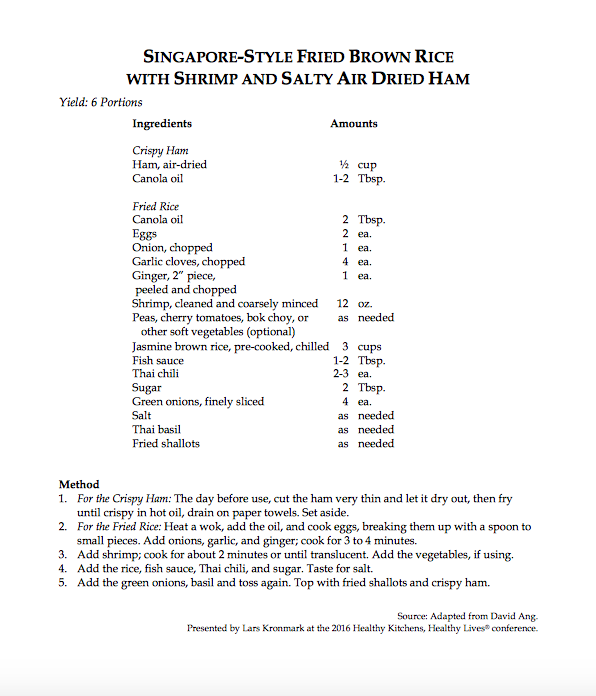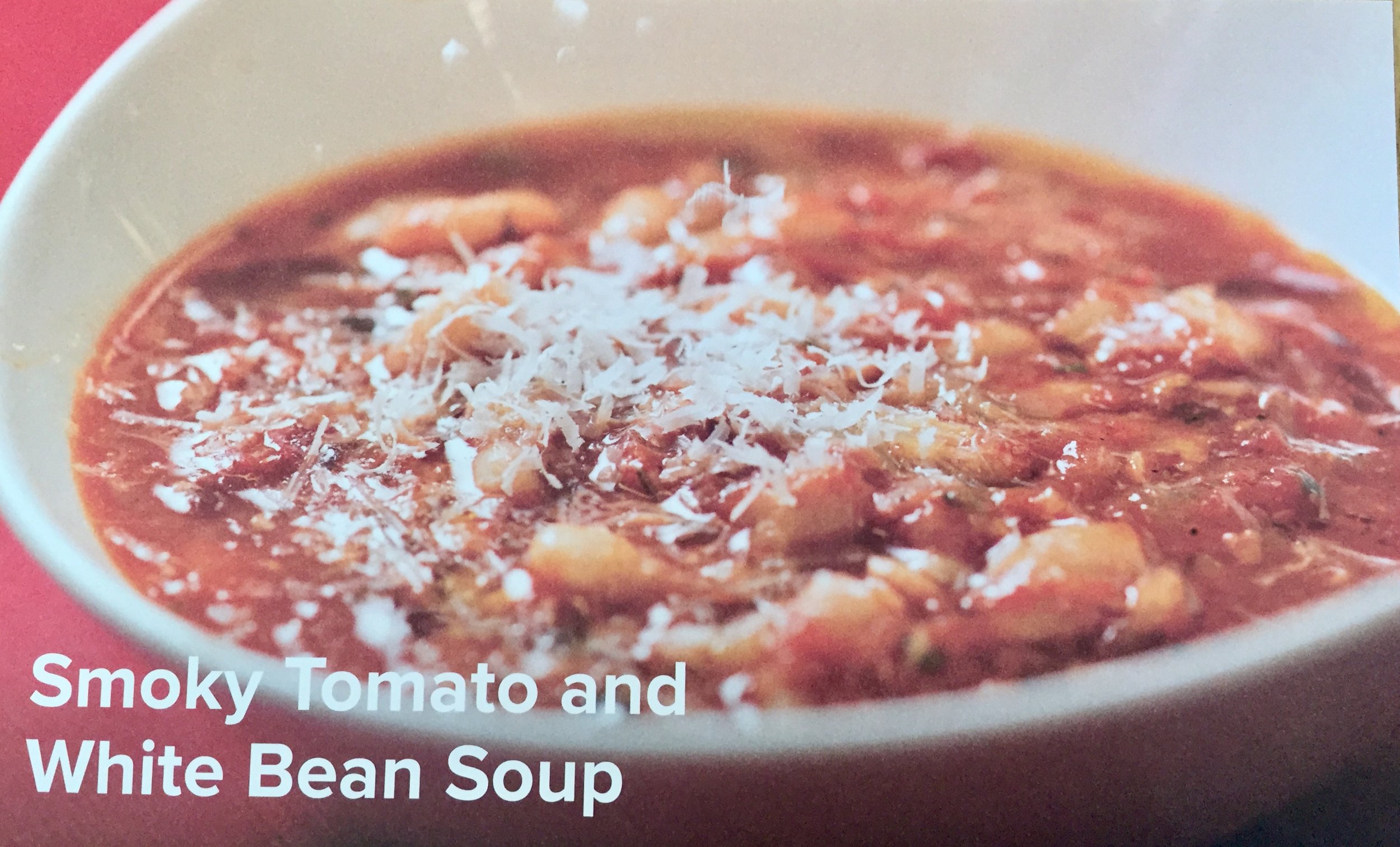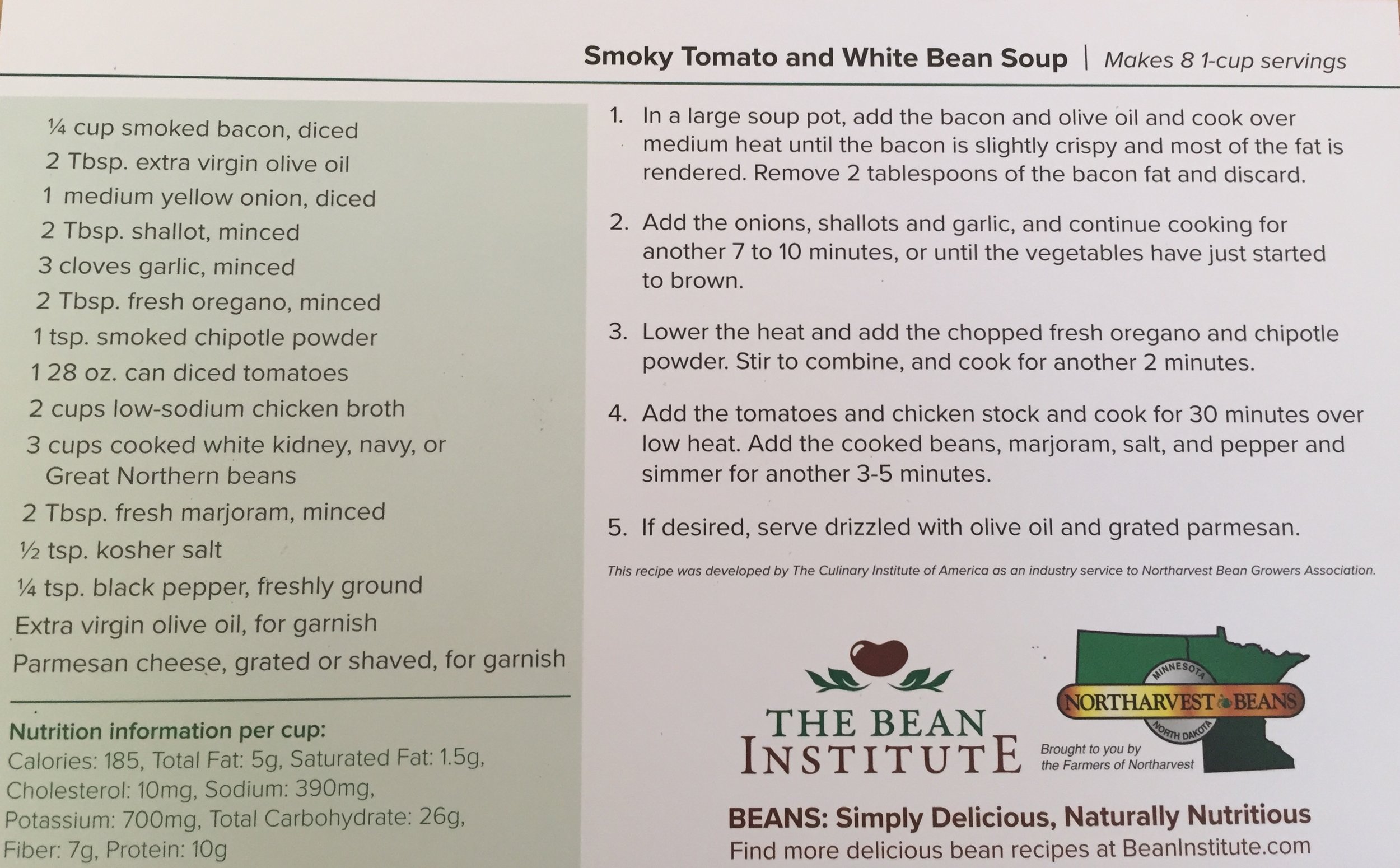Hope this entry finds you well and enjoying some downtime. Summer is a nice time to slow down a bit and enjoy so many fresh fruits and vegetables of the season.
Muffin Makeover
Good Morning!!
Taking advantage of some recent cooler nights and an abundance of fresh blueberries, I decided to bake. I made two recipes from a collaboration of the Culinary Institute of America and the Harvard School of public health.
The first recipe I experienced tasting at the Healthy Kitchens Healthy Lives Conference last February. It is full of goodness...soluble fiber in the chickpeas for cholesterol lowering, and healthy fats in the oil. Find the recipe along with a video tutorial here.
I didn't even follow the directions exactly and mine turned out great. I forgot to beat the egg whites separately and then add them at the end. I just made sure to mix the ingredients thoroughly in the food processor. Next time I will take the extra step and beat the egg whites and fold them into the batter. The purpose of that step is to make the muffin lighter.
Puree the chickpeas, oil, juices and zests, egg yolks until smooth. Add sifted ingredients (flour, baking powder, salt, cardamom) to the chickpeas, stir. Then add ground almonds. Next, you are supposed to whisk the egg whites until they form soft peaks and fold into the batter. (I forgot that part, oops!) scoop batter into muffin papers and top with additional sugar, ground almonds and cardamom. Bake at 325 degrees for 12-13 minutes or until toothpick comes out clean. Mine took longer, and I am wondering if this was written for a convection oven.
A fun and abundant blueberry picking adventure provided the opportunity to make a healthier blueberry muffin. These muffins are just the right size, not the super large, all white flour, high sugar versions you find in the bakery section of the supermarket or big box stores.
This recipe from the Culinary Institute of America uses whole wheat flour, almond flour and less sugar than a traditional bakery style muffin, resulting in an overall lower sugar and a higher fiber content. I did not have whole wheat "pastry flour" but instead used whole wheat flour and my tasty treat turned out just fine. Since this recipe makes about 18 regular sized muffins, I had leftover batter after I made the traditional 12, so I made some mini muffins as well. If you are looking for a smaller treat, these are a nice couple bites.
Mix dry ingredients first, then add the blueberries to the dry mixture to help coat the berries with flour so they do not sink to the bottom of the batter. In a separate bowl, whisk the eggs first and then add the liquid ingredients and sugar. Add the liquid mixture to the dry ingredients and berries but do not overmix. Bake in a 400 degree oven for about 15 minutes.
For those of you signed up to get my blog delivered straight to your inbox, click here for my last post that due to technical difficulties, did not get sent. You can see my blueberry picking adventure :)
Enjoy in good health!
** Blog content may not be applicable to your condition. Please discuss individual nutritional needs with Brenda during scheduled visits.
The most wonderful time of the year!
Blueberry season! This is my favorite time of the year. I love picking these berries with my family...so many fond memories with my kids (pictured below) when they were younger. We just went picking yesterday, so still creating memories!
These berries are beautiful to photograph (my pictures below). And I LOVE eating them. If you search anywhere online about a healthy diet, berries, especially blueberries will pop up on the preferred list of most diets.
Why is this fruit considered a super fruit? Berries in general are a great addition to any diet because of their high nutrient value and fiber content compared to their caloric content. Not to mention they taste so good. You can just see by the beautiful purplish-blue color that they are full of nutrients. Regular consumption of blueberries has been liked to better memory, lower risk of heart disease and cancer prevention.
Blueberries contain anthocyanins, phytochemicals that have been shown to be beneficial to our health. Anthocyanins are the compounds responsible for giving the berry it's rich color. These flavonoids can be found in other richly colored food such as red cabbage, eggplant, red grapes blackberries or red onion. An article in Todays Dietitian explains in more detail what anthocyians are. How much do we need to eat to derive health benefits? One study shows even 3 times per week can provide benefits. The Nurses Health Study, showed "women who ate the most blueberries and strawberries had a 32-percent reduction in their risk of heart attack compared to women who ate the berries once a month or less -- even in women who otherwise ate a diet rich in other fruits and vegetables." In addition to heart health, you can find berries listed as a preferred fruit on many kinds of diets including, for cancer prevention, anti-inflammatory, DASH diet for hypertension, and the MIND diet for memory.
1/2 cup of blueberries has approximately 40 calories and 2 grams of fiber. Full of antioxidants that may be beneficial in preventing cancer and heart disease. Antioxidants neutralize "free radicals" in our body that cause damage to the DNA which can lead to cancer. Antioxidants such as those found in blueberries may decrease the incidence of heart disease by decreasing the amount of bad cholesterol that becomes oxidized in our system. They are a good source of vitamin C, folate, potassium and manganese.
Some of my clients who have diabetes are often concerned about eating fruit because of it's sugar content. Berries in general are a good value food in terms of carbohydrate, fiber and nutrients. Blueberries can fit into diets of all kinds, including those for diabetes. Eating whole fruits, not taken in a juice or supplement form will provide the most benefit in terms of providing a low calorie, high fiber food to fill us up. A study led by the Harvard School of Public Health looked at whole fruit content of a diet and showed "people who ate at least two servings each week of certain whole fruits — particularly blueberries, grapes, and apples — reduced their risk for type 2 diabetes by as much as 23 percent in comparison to those who ate less than one serving per month."
For a summary on blueberries and health, click here.
Outside of just washing some off and eating them plain, this is my favorite way to enjoy blueberries, topped with greek yogurt and some toasted slivered almonds with a drizzle of honey.
As a dessert, think about a "dessert flip", instead of ice cream with berries on top, reverse it. Try 1/2-3/4 cup of blueberries topped with a couple small spoonfuls of ice cream and some sliced almonds and coconut shreds.
Enjoy in Good Health!
-Brenda
** Blog content may not be applicable to your condition. Please discuss individual nutritional needs with Brenda during scheduled visits.
National Nutrition Month!
National Nutrition Month, March 2017
Putting your best fork forward suggests for us to think about the foods we are eating and strive to get the best nutrition possible. One of the best ways to do this is to be in charge of what you are eating by cooking more at home. You do not have to be a gourmet chef, just willing to experiment and try new things.
We all know to have better nutrition, we need to eat more vegetables. Just by knowing that fact does not mean it translates into action. Most people will eat more vegetables if they are delicious. So we all know broccoli is healthy and probably even know it is a superfood and can help prevent heart disease and may be protective against some cancers. Some may be motivated to eat steamed broccoli on the side of their plate solely for the health value. Many though will become tired of this and need variety. In my last newsletter, I posted a broccoli soup recipe. Other yummy ways to enjoy the same food are in a salad version or roasted with other satisfying flavors.
From Food and Nutrition Magazine
Top: Broccoli Salad with Almonds and Creamy Dijon Dressing Sara Haas, RDN
Above: Lemon Thyme Roasted Broccoli Jamila Rene' Lepore, RDN
One of my favorite ways to increase vegetable intake is to add them to what I am already making. For example, you can make plain quinoa below as a side dish or with a couple extra steps, you can boost the nutrition and flavor by adding sautéed additions.
To increase the flavor of Quinoa, toast it first in a 350 degree oven for a few minutes
Sauteed mushrooms in olive oil and a bit of white wine, added to quinoa and topped with green onion really increase the flavor (pictured in first 2 photos above). Last photo shows minced shallot, mushrooms and kale which were sautéed and later added to cooked quinoa on another day. Spinach could work in place of the kale but added way at the end of the sautéeing process since it wilts quickly. Kale can stand the longer cooking time as it is tougher.
Same idea with brown rice. Instead of just a plain side of brown rice, how about adding some onion, celery and carrot? Neither of these vegetable additions mentioned will get us to 1/2 plate of veggies however, they give us a head start and make a side dish a little more intersting and definitely more nutritious!
Chop 1/2 onion, 1-2 celery stalks, 1 carrot and soften a bit in pan with 1 Tbsp olive oil for about 5 minutes. Add brown rice and stir for 1 minute. Add vegetable or chicken broth and cook as directed. Yum!
Simple goals for a salad, pick three colors and then vary those colors each time.
Those of you who know me, have heard me suggest, "pick three colors for a salad." If you choose vibrant colors, you are getting great nutrition. A simple and easy combo is green, orange and red. Immediately you might think of lettuce, carrots and tomato but red pepper works great too. Some pre-shredded or pre-chopped veggies may help you get the job done when crunched for time. Some of my favorite convenience veggies are shredded purple cabbage and shredded carrots. Enlist the help of family members to get the vegetables on the table!! Kids love to twirl salad spinners! Vary your lettuces to keep it new. Arugula adds a spicy flavor.
There are so many places to get inspiration to try new things or add vegetables in a new way. Some of my favorites are Cooking Light and Eating Well. Head over to pinterest to find loads of inspiration. I am regularly adding recipes to my own pinterest page. Feel free to check it out for some ideas.
Have a great week! Be Well!
-Brenda
Go Green For St. Patricks Day!
Cooking Light Magazine, Green Pea and Parsley Hummus
Happy St. Patricks Day (a day early)! Seems like a good day to fit more green things into our diet, ones that are actually healthy for us!
Breakfast: How about avocado toast with an egg and green pepper scramble? Avocado is full of good-for-you monounsaturated fat, folate and potassium.
Snacks: Edamame is the perfect mix of carbohydrate, protein and fat for an afternoon snack, packed with fiber, folate, vitamin K, manganese and potassium. Or try the cooking light Green Pea and Parsley Hummus pictured above, with a variety of veggies.
Lunch: Add a kiwi to the side of your sandwich or salad. One little kiwi packs 100% of our daily requirement for vitamin C! What a great fruit, just slice off the top of one side and you can eat it with a spoon, scooping out the yumminess!
Dinner: Add some parsley to turkey meatballs for dinner. Parsley is not just a garnish but full of vitamins A, C and K as well as folate. And if you make the hummus above, you will have some on hand for this recipe! A favorite dinner recipe of mine is from Chef Joyce Goldstein presented at the Healthy Kitchens, Healthy Lives Conference, Moroccan meatballs. It calls for about 1/2 cup total chopped parsley between the sauce and the meatballs. Check out my Facebook post from May 2016 for the recipe.
Moroccan Meatballs, Chef Joyce Goldstein
Have a great day! Be Well.
-Brenda
** Blog content may not be applicable to your condition. Please discuss individual nutritional needs with Brenda during scheduled visits.
My Favorite Recipe from Napa
As participants of the Healthy Kitchens Healthy Lives conference In Napa Valley, CA, we were exposed to hundreds of recipes. This was my favorite. I have never worked with lemongrass before and some of these ingredients can be hard to find. I did not want to wait until I had everything on hand to make this dish so I skipped the thai chilis and added some cayenne pepper to the marinade. I also used regular basil this time. It was still good! Next time I will experience it as written. Click here for a short video on prepping lemongrass.
Using a firm (not extra firm tofu) I take it out of the package and get some of the moisture out of it by placing on paper towels and then putting something heavy on top of it for about 30 minutes. While that is prepping, you can get the lemongrass ready by first chopping it into a much smaller piece and then basically peeling it back until you get to the softer inner part. Then you can chop it and put into a mortar and pestle to pulverize it along with the chilis (not pictured here). After the chilis and lemongrass are pulverized, add the soy sauce, sugar and tumeric and mix well.
tumeic, soy sauce and sugar for the marinade., Onions shallots and garlic for a saucepan.
Add the marinade to the sliced tofu (sliced fairly thin) and let it sit for 30 minutes. The marinade is more like a dry rub. It is not supposed to have much liquid. Add the onions, garlic and shallots to a sauce pan with 1 Tbsp oil, seasoned with some salt. The vegetables are not meant to brown, more like steam. Cook for one minute, covered and then add 1 Tbsp water and continue to cook covered for 5-8 minutes until the onions are translucent and soft, then set aside.
After the tofu has marinated 30 minutes, it is time to cook in a non stick pan with 2 Tbsp of oil. Make sure the oil is hot and then place the tofu in the pan and cook on both sides until brown and caramelized, (last picture above).
Once the tofu is brown, add the onion mixture and toss to warm and combine with tofu. Add 1/2 of the peanuts and thai basil and then garnish each plate with the rest of the nuts and basil. I served this over brown rice with some steamed broccoli on the side. Enjoy!!
Finding Inspiration in Napa!
Beauty is abundant in Napa Valley
Hi everyone! I just returned from a 4 day conference in Napa Valley, called Healthy Kitchens, Healthy Lives. This conference is a collaboration between the Culinary Institute of America and the Harvard School of Public Health. We sat in sessions focusing on the science of health and then how to translate that science into the food that is on our plates through cooking demonstrations and a hands on workshop. It is not very hard to be inspired by the beauty of Napa Valley. It is also easy to get inspiration being surrounded by healthcare professionals and amazing chefs who are committed to improving the lives of others through healthy food. I feel reinvigorated with new motivation and commitment to health for me and my family and for my clients.
Pictured below with Chef Lars Kronmark. I love how he teaches, 'recipes are a guide!" In the past I would not have made this if I did not have every single item. I did not have the chilis at home so I sprinkled some cayenne pepper for a little heat. This recipe I created with my group in the hands on kitchen session I attended, highlights a whole grain in the brown rice and just enough animal protein. You can add any additional vegetables or greens to your preference. I made this at home since returning and used bok choy, baby bok choy and Lacinato kale. Use what you can find in the vegetable crisper. Easy on the fish sauce and additional salt if you are watching your sodium. I did not even use the ham and it was great. The fried shallots are so yummy!
There was so much information, too much to share in one post. So here are some of the highlights which will be expanded upon in future posts along with some of my most favorite recipes from the conference!
- The mediterranean diet with it's emphasis on vegetables, whole grains and unsaturated fats, in particular olive oil, has many benefits for our health.
- The type of dietary fat we choose is important. A recent study from Harvard T. H. Chan School of Public Health showed lower mortality in those who ate more unsaturated fats and higher mortality in those who ate more saturated fats. Read more here
- In order to eat more vegetables we need to make them delicious and craveable, not just a steamed side of something on our plates.
- Home cooks eat more healthfully and eat fewer calories than those who dine out.
- Mindfullness is very important to our overall health and affects our food choices positively when we can be mindful. Conversely, when we are not being mindful with our food, it can have negative effects on our health.
- Exercise is great of course but it is only a subset of the greater big picture of "activity." Many of us need to work on becoming more active and therefore less sedentary, instead of focusing only on "getting exercise."
Walking back to my car one afternoon.
As I was walking back to my car at the end of the conference I started thinking about the 4 days spent here. Funny thing, even though I truly enjoyed my time away, conferences like this can be overwhelming. Because of the sheer amount of information and ideas presented, it can be hard to know where to start when applying to daily life. It's tempting to take all of these recipes and try to add them all in over the next two weeks. A better option is to pick one thing, one idea, one recipe and start there. So I think I will do that! Wanna join me?
** Blog content may not be applicable to your condition. Please discuss individual nutritional needs with Brenda during scheduled visits.
Happy Valentines Day!
For a sweet treat, enjoy berries with some dark chocolate!
Happy Valentines day! Lets start with dessert first! Yum. There are health benefits in chocolate if you choose the dark variety. Look for 70% cacoa or above. Dark chocolate has less sugar than milk chocolate and has a rich flavor. Read more about some of the benefits of dark chocolate here!
For a quick, and "good for your heart" dinner, try this Smoky Tomato and White Bean Soup. For a video tutorial on how to make it, click here. Go slow on the smoked chipotle powder if you are not a fan of spicy food, start with 1/4-1/2 tsp and add more if you wish. Enjoy!!
Have a great day!
** Blog content may not be applicable to your condition. Please discuss individual nutritional needs with Brenda during scheduled visits.





